#the goddess archetype
Text
𝔱𝔥𝔢 𝔤𝔬𝔡𝔡𝔢𝔰𝔰 𝔞𝔯𝔠𝔥𝔢𝔱𝔶𝔭𝔢


[I AM FOLLOWING AYESHA K.FAINES RESEARCH OF FEMININE ARCHETYPES]
↳ the sexual feminine archetype of the mystic archetype.

♇ when your percentage of the lover percentage is lower than 70%. and when your personal score matches with your percentage goddess the most. [your lover archetype is dominant and the mystic archetype is the second dominant too].
♇ the goddess is one of the sexual feminine archetypes that belong to the feminine archetype the mystic, whereas the other sexual feminine archetype is the enigma.
♇ people who belong to the goddess archetype are perceived to be sultry women, women who have an ethereal and laid-back essence which could be considered hypnotic and mesmerising to those around them. they have a type of emotional manner that keeps the people around them at arms-length.
♇ when developed, those who belong to the goddess archetype have an emotional intelligence that could be considered wise, and due to this, they might appear other-worldly to other people. even if they're people who are emotionally smart, due to them being distant to other people, they come off as aloof, but it is usually because they're focusing on themselves.
♇ as majority of them are naturally introverted, they are people who like solitude and isolation, sometimes like a hermit. and most of the times, they like to tend to hobbies that help them search inward, such as meditation.
♇ though, even though if they're introverted, they still like attention, they like being surrounded by their friends and loved ones.
♇ their appearance can come off as striking and to pair it off, they have a personality which could be perceived as distinct. as i have mentioned, goddess women like inner peace, so they tend to be interested in spirituality, connecting to something that is greater to them helps them feel comfortable, safe and protected.
♇ their most private area, where they feel the most comfortable is their home. it helps them keep a grounded energy. people find their energy to be alluring and pleasant, and even more enchanting and people find them to be at their most magnetic is when they're disappeared from the public, specifically when they're a celebrity. a good example, is alexa demie.

♇ she is known to hide in the shadows a lot, and sometimes, well actually majority of the times, it has people wondering what she actually wants for her career. an example can be seen in this video.
♇ overall, goddess women are stars, even said by Ayesha her self, they're a star light years away, and only a few people can see their qualities.
♇ when close to their loved ones, they appeal and encourage their dreams and future wants. when they're closed to the people they care about, they're like a warmer version of a siren, which could be considered a "mermaid". a calm mystic essence, an aura that can make people want to be around them more.
♇ the description of a goddess woman can include them having a sultry voice and lush hair. they're women who take care of their appearance as how they look likely matters to them a lot.
♇ on one hand, they can become people too fixated on other things that cut them off from their comfortability. and since they are people who attract all kinds of people, one of them being curious individuals, they sometimes get overwhelmed and get into hiding. underdeveloped goddess women sometimes are not able to express their creative and "erotic" energy.

♇ majority of the time, goddess women are peaceful and humanitarians. they're likely feminists and stand for a cause. and when speaking to them or hearing them speak, you'd realise they're usually kindly spoken people, very articulate.
♇ other people might see them as a young soul, or someone who brings refreshing energy. artistic energies, when fully developed they can easily bring their ideas to life.
♇ they like things that touch their soul, attracted to things that help them understand their roots and are not afraid to face their inner-depths. sometimes underdeveloped goddess women might fear to face their inner-depths to please other people in their life, to be a walking matt for them.
♇ as i did more research about goddess women, i understood that they can be deeply in touch with spirituality, and like to be very private. other people around them could sometimes feel like they cannot or dont live up to their potential. and sometimes this could lead people into thinking that they're stupid.
♇ they have a dreamy way of speaking, and even sometimes drag out their words. when they dont see themselves as the high value they are, they could get into relationships with people that dont really fit with their political views, specifically feminism.
♇ when it comes to their clothing, they like to wear garments that define their personality. could like aesthetics that are dark or portrays their femininity in a "broken" way. specifically lana del rey. most of them are into the vintage aesthetic, and have a style that other people want to replicate. [gabriette and alexa demie specifically].
♇ they're very expressive about their likes and dislikes, and most of the people i've watched are into getting tattoos, or are interested in having things that make their physique stand out.
♇ most of them have a strong connection with their mother and make-up, and sometimes they might allow make-up to help value themselves.
♇ goddess women understand that women can be many things, and can express themselves in ways the patriarchy dont want them to be elevated in. as they're seen as glamorous, they like to look good as they're usually under the spotlight. many goddess women have a popular partner, or even if their partner is unknown, they could be a respected person with an authoritative position. sometimes their partners could be their complete opposite.
♇ whenever goddess women are under the spotlight, the usually get meme'd a lot, or just whenever they do anything people speak about it. they could sometime feel suffocated by fame.
♇ as goddess usually represents fertility, it's not a surprise that most goddess women are into having a family of their own. but even if they want a family of their own, it doesnt mean they dont want to work, as i did research, i realised most goddess women were/are into modelling.
♇ they like to pursue a route that gives them happiness, so people in their social circle could think of them to be stubborn. they're usually questioned for their ideas and how they embrace their heritage and roots, and since they're usually questioned a lot, goddess women step into a role of being self-aware.
♇ some goddess women could be into cosmetic surgery, and can be a bit [but almost too much] into heteronrimity.
♇ their intelligence and beauty could be envied, they're open about their sexuality and most people look up to them for guidance. when doing research about them, i realised that a lot of them have been victim of sexual shaming, [even though many people have been in general, this has also happen to some of my friends who do belong to this archetype].
♇ when it comes to their appearance, a lot of them have doe/bug eyes, have luscious hair, they also have an earthly and natural type of beauty, which can make them be deemed as elegant and graceful.
♇ they like to be prepared for anything, especially career wise. and women who belong to the goddess archetype like to experience almost everything with their partner. sometimes might be seen as someone who is smothering. on the other hand, even though they like to be around their partners a lot, they also like to be private.
♇ and in a friendship group, they might be seen as the mother of the group, or you could say leader of the group. can be into making food, and also specifically the art of it. unlike the mother archetype, they dont only/mainly do it for their partner, they do it for themselves, their friends and the people they care about.
other goddesses ↴
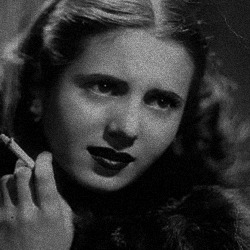
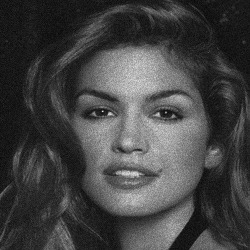
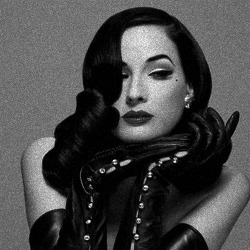



♇ goddesses i put above are eva peron, cindy crawford, dita von teese, jisoo, grace kelly and melania trump.
♇ understanding the goddesses archetype, is that it shows that they are women who are usually do focus on themselves, and can be so to themselves to the point that other people might feel like they do not know them at all.
♇ and to make the goddesses archetype easier to comprehend i gathered characters from different tv shows or films that come under the archetype.
♇ from yellow jackets - lottie matthews, lottie. is a big example of an underdeveloped goddess archetype, though it isnt necessarily her fault due to the trauma she has gone through while stuck in the wilds. she is a very spiritual person, and even isolates herself with other people to find herself. but due to her spiritual nature, people easily found way to see her as a leader and was advised for her guidance, during the time the team were stuck in the woods, lottie was seen as somewhat as a mother [not to be confused as the mother archetype as they are striking differences between the two]. she helps other people express their emotions and speaks about spirituality that could make other people uncomfortable.
♇ from the maden men franchise - betty draper, her character strengthens my idea that a lot of goddess archetypes are models, as she was a model for a print ad. she is a character who gets with a romantic partner that has authority, her romantic partner, don who is a completely different person to her, made betty express versions of herself that she disliked and wanted to change for the better.
♇ we have the addams family - morticia addams, for the fictional goddess women, morticia addams is a patron saint of what a goddess archetype is. her husband, gomez kisses the floor she walks on, morticia is a seductress and has a striking appearance that fascinates other people and makes other want to replicate her style, in real life [like vanessa hudgens] and in the show, wednesday. she is soft spoken, almost dreamy like and could be considered as laid-back and ethereal.
♇ from the postman always rings twice - cora smith, a mysterious woman who is married to someone who has authority, [an older man]. is perceived as a character that can also be deemed as an underdeveloped goddess archetype, who uses the love a man has for her to aid her to kill her husband.
♇ the fall of house usher - verna, another mysterious woman who does keep people at arms length, people come to her to have once in a life time deal, she uses her erotic energy to lure people in and capture them. she is wise, and has a calm essence that makes people comfortable around her. verna is prepared for everything and knows how to handle obstacles like how the two siblings, specifically the man went against her deal and hunted everyone in the usher family down.
♇ we have from the infernal devices and shadow hunter chronicles - tessa gray/herondale, like the other goddess archetype, tessa gray has a romantic partner who has high authority from the novel she is from. will herondale is the leader of the clave and is well respected. aside from that, tessa is usually under the spotlight because of what she is, and is seen to be someone who is serene, wise and has a warm energy that has many people want to be around her, but as she gets older, she does keep people at an arms length. in the early books, fertility was a big theme for her, as she was unsure if she could have children because of her being a half-demon. like a goddess archetype, tessa herondale has a grounded energy and has a striking beautiful appearance that other say is unconventional.
♇ from lore olympus/greek lore - selene, being a goddess herself, selene is someone who is respected and under the spotlight as she is a prominent and important figure for those who worship her, and like most women from the goddess archetype, she is someone who wants to have many moments with her loved ones, like endymion. a deity of fertility, she is someone who likes to keep in the shadows unlike her brother, helios who is considered to be flashy. selene has a personality that could be deemed as peaceful and timid like most women under this personality type.
♇ from the witcher franchise - yennefer of vengerberg, fertility was a big element to her character, as having a child was something she was not able to do, but with geralt, ciri was able to be her child surprise. and like the other goddess archetypes, yennefer is seen with a partner of authority/power, and it being geralt. her beauty is perceived as other-worldly, and becoming [beautiful], and powerful was so important to her that she constructed herself to become a better version of herself in a painful manner. there was a moment of the show, [i'll play the games later], that there had to be much internal search because she had lost her powers for a brief moment.
♇ next from legacies, there is josie saltzman - looking within herself was a big theme for her character, because she was known to be a character who was in her twin sister's shadow, lizzie for a long time; to the point that other characters had almost forced her to become a better version of herself, and even stand up for josie to her sister. josie was almost like a glass child. her main relationship, or most known one, is with someone who is the opposite of her, penelope, someone who had high authority within the boarding school she was in. even though josie is timid and shy, she is very emotionally intelligent, which is why people like to be around her a lot. she is understanding and empathetic.
♇ lastly, there is a character from winx club, aisha - in the show aisha is one of the main characters who gave advice to other people, sometimes she can be perceived as the mother of the group, [once again, to not be thought as the mother archetype]. when aisha was younger, aisha was isolated, which kind of made her into someone who is explosive and has a strong temper. and when. the series began, aisha was seen as anti-social, but when she is gotten to know more, the people around her are more aware of her open-minded traits.
♇ as i have done my research, i gathered that a lot of enigmas are are likely going to have capricorn, taurus and scorpio in their big six; in order of how much they appeared.
♇ they are also going to have leo, aries and taurus appear in their dominant signs; in order of how much they appeared.
♇ the planets sun, saturn and moon appeared in their dominant planets the most; in order of how much they appeared.
♇ the element that appeared the most was fire, second was earth.
♇ lastly, when it comes to the modality, what appeared the most was fixed.

♇ feminine archetype masterlist
to find out what feminine archetype and sexual feminine archetype you are
buy a natal chart reading from me
masterlist
♇ pluto

#goddess archetype#the goddess archetype#the mystic archetype#mystic archetype#feminine archetype#the feminine archetype#alexa demie#lana del rey#gabriette#claire nakti#eva peron#cindy crawford#dita von teese#jisoo#grace kelly#melania trump#lottie matthews#betty draper#morticia addams#cora smith#verna tfothou#tessa gray#selene#yennefer of vengerberg#josie saltzman#aisha winx
260 notes
·
View notes
Photo

Womanly: The Goddess Archetype...Jasmine Tookes.
31 notes
·
View notes
Note
reverse unpopular opinion for....aw heck, go ahead with Rhea for this one as well
This might as well be a part 2 to the previous Rhea ask so :D
I find Rhea to be so compelling for several reasons, one of the biggest being the inherent contradiction that she is very much capable of caring, loving and trusting others, sometimes with some insane gestures when you realize their meaning behind them (ie. Saving Jeralt's life by giving him her blood thus risking outing herself because of it, letting Catherine keep Thunderbrand despite the fact it's the one Relic she could safely recover- implicitly trusting her with one of her family's remains without any obligation to do so, risk angering a noble house to give Cyril a better life and treating him like her son in all but name)... And yet she cannot, for the life of her, bring herself to be honest with them.
Something fascinating I noticed about Rhea is that she ironically seems to prefer people who are blunt with her, because look at the people she's closest to - Seteth spends all of Part 1 openly questioning her, Flayn is constantly on the verge of accidentally outing herself, Cyril is so direct and honest he sometimes accidentally comes off as rude (Shamir too even if she's not as close to Rhea) and Catherine wears her heart on her sleeve.
Heck, all of them are either not that religious or outright non-believers, which ironically I believe helps reassure Rhea they love her because of who she is as a person and not because she's the archbishop, especially given how much she implies to find the position incredibly alienating.
And isn't that just so fascinating? That she is more than capable than loving others and caring for them risking her own personal safety, she appreciates people being honest with her.... But cannot, will not be entirely honest with them in turn.
Because make no mistake, that right there is Rhea's true fatal flaw: her compulsive need to keep everything a secret.
From the big but understandable stuff that would get her and her family scrapped for parts if it became public to downright pointless shit to hide like not liking hot drinks, and it's the one trait that screws her over the most, between being the reason Jeralt left (since she didn't tell him ANYTHING about what happened with Byleth so he assumed the worst and fled) and the thing preventing her from making connections as deep as she actually wants (like even just telling her loved ones how much they mean to her), as well as getting the support she actually needs. And because she feels she has to bear everything on her shoulders, she crumbles under the weight because no matter how hard she tries, she will never be good enough.
In that sense the role of archbishop is a sort of mask to her. It's definitely a part of her, but also something she has sort of burrowed into like a safety net preventing her from being true to herself. Because that'd mean making herself vulnerable, in more ways than one. To say nothing about putting her surviving family and remnants of her dead kin to jeopardy.
If she were to open up she'd be... More lively, I think. Definitely sillier if Heroes is any indication, and arguably more willing to take a direct approach in helping people. And definitely more loved and happier.
And perhaps, one day she'd realize she doesn't need to bring her mom back to fix Fódlan. She's not doing it alone anymore, after all.
#ask replies#loregoddess#fire emblem#fire emblem three houses#fe16#fe16 spoilers#rhea#my rambles#is this coherent in any way? definitely not#i just love rhea as a deconstruction of the mikoto archetype#she wants to be like mikoto and lumera so bad but she can never measure up to them#and instead of seeking the help of others to compensate she tries to bring her goddess mom back#she's a foil to alear in that sense. i love them so much for different reasons#and i think they'd be great friends#like rhea's whole secrecy complex is definitely a product of her trauma#and i love it. i wanna put her in a test chamber and see how she functions#anyway again sorry for pretty much dumping words at random😅
93 notes
·
View notes
Photo

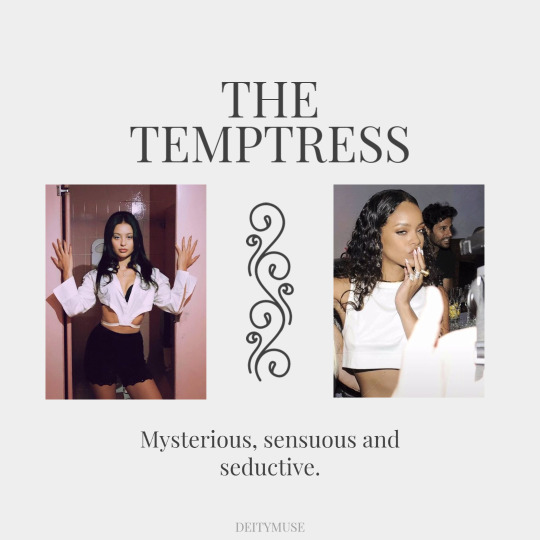

find which kitty archetype you are
#uquiz#quiz#archetype#kitty archetype#ariana grande#megan thee stallion#nicki minaj#coco jones#lori harvey#saweetie#rihanna#beyonce#halle bailey#alexa demie#chloe x halle#celebrity archetypes#sza#lana del rey#doja cat#the goddess#the temtpress#the princess
869 notes
·
View notes
Text
Crosshair's Anima
This is the third part of the character analysis for Crosshair. You can read part 1 and part 2 here. I will be referring to “Goddesses in Everywoman” by Jean Shinoda Bolen for this analysis.
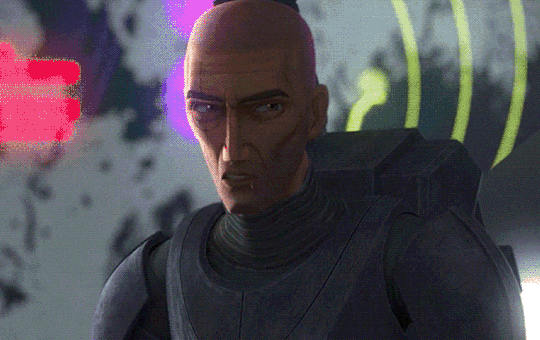
Crosshair’s anima consists of multiple archetypes, but the most prominent ones are Artemis and Hera. Artemis, or Diana as the Romans called her, is the Goddess of the Hunt and the Moon. She is the first-born twin sister of Apollo, the God of the Sun. As the Goddess of the Hunt, she wields a silver bow and carries a quiver of arrows on her back. She roams the wilderness of forest, mountain, meadow and glade with her band of nymphs and hunting dogs. As the Goddess of the Moon, she acts as a light-bearer, carrying torches in her hands or with the moon and stars surrounding her head. She is also the Goddess of Wildlife and she is associated with many undomesticated animals like the stag, doe, hare, quail, lioness, boar, bear and horse.

Artemis is a virgin goddess and she is the personification of an independent feminine spirit. She feels whole without a partner, and she has the “I can take care of myself” attitude. This archetype enables one to pursue interests and work that matters to them without needing other people’s approval. Their identity and sense of worth are based on who they are and what they do, rather than their relationships with others. Although Crosshair is part of the Bad Batch, he is capable of doing his own work while separated from them. In “The Bad Batch”, when the Bad Batch, Rex and Jesse infiltrate the Cyber Center, Crosshair positions himself from a distance, and he goes to secure a speeder craft as their getaway vehicle. In “A Distant Echo”, when Anakin tells the Bad Batch and Rex to split up so they can find Echo easier, Crosshair chooses to separate from his team and follow Anakin. With the rise of the Empire, Crosshair remains capable of carrying out the orders given to him even though the Bad Batch refuses to do so. He strongly identifies himself as a soldier of the Empire, claiming that this is who he is in “Return to Kamino”. He is certain of his identity even without the influence of the inhibitor chip and without the approval of the Bad Batch.

As the Goddess of the Hunt, Artemis is an archer that has the ability to aim for any target and know that her arrows will reach its marks. This archetype gives one the ability to concentrate intensely on whatever it is important to them, and to be undistracted from their course, which is called “focused consciousness”. The needs of others or competition would not deter them. In fact, competition only heightens the excitement of “the chase”. Not even obstacles or the difficulty in achieving the goal can hinder their perseverance. Since Artemis is more aligned to her instincts, her arrows are charged up with emotions. Hence, when a person channels their passion and intense emotions into pursuing a goal, their focus can be so intense that it becomes incredibly precise or destructive. Crosshair channels his intense emotions through his sharpshooting skills. His focus is so intense that every shot he makes is a precise killshot. However, in “Aftermath”, the shot Crosshair makes towards Wrecker only injures him. This may be a sign that he is fighting the effects of the inhibitor chip, and that he never intends to kill his brothers despite they have been branded as traitors to the Empire.
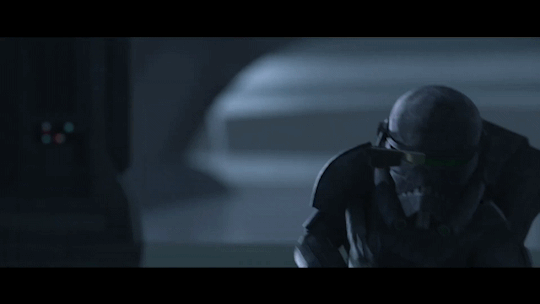
Artemis is seen as the archetype of the women’s movement because she is competent and independent, and she is protective of women and children. Since Artemis goes hunting and exploring the wilderness with her band of nymphs and minor deities associated with mountains, woods and streams, Artemis is also seen as the “big sister” archetype who emphasizes the “sisterhood” of women. In the myths, Artemis helped her mother Leto during her prolonged childbirth, and saved her from the giant Tityus who tried to overtake her. Artemis also came to other women’s aid, for example, she rescued the woodland nymph Arethusa from the pursuit of a river deity. Artemis is also known for her mercilessness, which is evident when she punished the hunter Actaeon who accidentally saw the goddess and her nymphs bathing in a hidden pool.

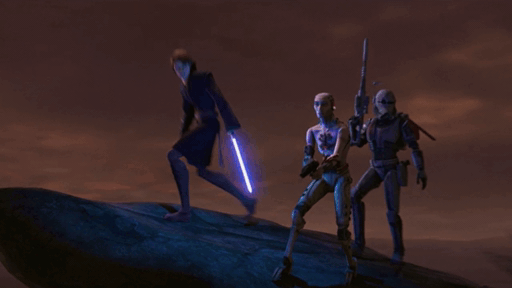
Crosshair is very protective of his brothers. In the Hyperspace Stories #10, when Dr. Krail appears as a hologram to greet the Bad Batch and state that he has been anticipating their arrival, Crosshair stands in front of Wrecker to protect him. In the episode “On the Wings of Keeradaks”, Crosshair protects the Poletecs by taking down the battle droids from afar. He also cares about Echo’s wellbeing as he is seen placing a hand on Echo’s shoulder after they fight off the battle droids. There are many headcanons and fanfictions that depict Crosshair protecting the vulnerable such as rescuing a person from another’s unwanted advances, which sometimes leads to a physical altercation. If Crosshair is not affected by the inhibitor chip, he will be impressed by Omega’s bravery for standing up for the Bad Batch in “Aftermath”.
People who feel true to themselves being with nature is connected to Artemis because she is associated with the wilderness and undomesticated nature. They may feel like they are in a spiritual communion with nature – be it surrounded by forests, mountains, or under the starry night. As the Goddess of the Moon and the Hunt, Artemis grants “moonlight vision”, which helps a person to look inward (like going into the wilderness, which contains our dreams, experiences and connection with nature) and be more reflective. There are headcanons that depict Crosshair as an animal lover, especially towards baby animals, which is an Artemis trait. In “Kamino Lost”, Crosshair is shown to have “moonlight vision” when he successfully takes the shot to save Omega despite the dark surroundings and the murky waters below. In “The Outpost”, Crosshair makes a spiritual connection with the Ice Vulture, which helps him to look inward and reflect on his decisions, leading him to turn against the Empire.
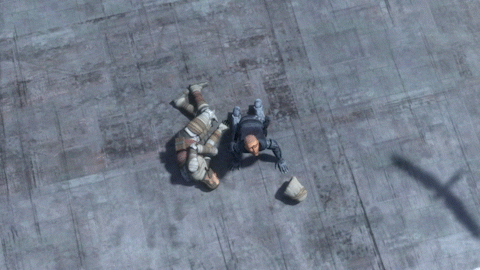
In Greek mythology, three goddesses make up the moon trinity – Selene who rules over the sky, Artemis on earth, and Hecate in the Underworld. This moon trinity can be represented by Riyo Chuchi, Crosshair and Echo in terms of their fight against the Empire: Riyo Chuchi is Selene because she is a senator and her high status means she is at the sky domain (the Galactic Senate); Crosshair is Artemis because his rebellion starts in the wilderness of Barton IV; Echo is Hecate (who is a constant companion to Persephone, Echo’s anima) because he fights in the darkness and at the crossroads where he rescues Howzer and two of his men.
Zeus and Leto are parents to Artemis, who are both loving and approving of her course of life. Parental support is needed to cultivate the Artemis archetype from a young age. Opposition and disapproval from parents (mostly from the father) may damage the self-esteem and self-confidence of an Artemis person. They may continue to put on a defiant attitude, but deep down, they feel inadequate despite all the successes they have, and they have a tendency to self-sabotage. Conflict usually arises between the mother and the daughter, especially if the mother is a Demeter archetype. A Demeter mother prefers a compliant good girl like Persephone, who will follow her, ask for her help, and accept that “mother knows best”. However, Artemis is the opposite to Persephone for she is independent and stubborn, which can lead to disappointment and feelings of rejection within the Demeter mother.

The conflict between Demeter and Artemis can be seen between Hunter and Crosshair. Hunter has the Zeus and Demeter archetypes. As Zeus, Hunter recognizes Crosshair’s talent and encourages him to develop it further. Though, his Demeter anima likely causes Hunter to limit Crosshair and stop him from doing certain things. Nevertheless, Crosshair’s stubbornness will get in the way, leading to arguments between the two. In “Aftermath”, Crosshair keeps shooting at Caleb Dume despite Hunter repeatedly telling him to stand down. They later have an argument about following orders. In “Return to Kamino”, Hunter refuses to accept that Crosshair willingly chooses to join the Empire, and decides to forcibly take him away after stunning him. In “Kamino Lost”, Hunter keeps trying to reason with Crosshair about the Empire’s atrocities but to no avail. Crosshair feels that Hunter is trying to control and limit him, deciding what is best for him because Hunter has the mindset that “he knows best”. The more Hunter tries to control Crosshair, the more Crosshair will rebel. This is why he stands his ground and refuses to rejoin the Bad Batch.
Another problem faced by the Demeter mother-Artemis daughter involves a weak, passive mother. The mother may be depressed, an alcoholic, trapped in a bad marriage, or immature, which causes the daughter to take on the parent role. The daughter is disappointed that she does not have a strong mother, and that she is not strong enough to change her mother’s life (unlike the goddess Artemis who was able to help her mother Leto). Determined not to resemble her mother, the Artemis daughter refuses to show her vulnerability and dependency, and she usually rejects what are traditionally feminine like softness, gentleness and receptivity. Crosshair faces this issue when he sees Hunter has failed in his leadership skills or has let his feelings getting in the way. In “Aftermath”, when Hunter refuses to execute Saw Gerrera and his people, Crosshair begins to see Hunter as unfit to lead the squad, and he wants to take over. Crosshair even demands Hunter to explain when he has become soft as he disobeys orders to save Omega, which indicates Crosshair’s contempt for softness and vulnerability. In “Kamino Lost”, Crosshair accuses Hunter that his failed leadership is going to lead them to their deaths, and he expresses his disapproval to let Omega calling the shots because she is a child.
Like Artemis, Crosshair is a natural competitor who is willing to push himself to the limit to achieve his goals. He likes to be challenged, which is seen in the Hyperspace Stories #10. In this comic, the Bad Batch is sent to Hylanth for a mission to investigate battle droids. Crosshair thinks that this mission can be carried out by the regular clone troopers, and the apparent lack of challenge frustrates him. After Tech explains that these battle droids have been modified, Crosshair says that “maybe there is hope for this mission yet” as he feels motivated to take on the challenge. Even if the goal does not guarantee success or it can cause him to become distant from others, Crosshair still chooses to continue his pursuit because he finds personal fulfilment with it. Since Crosshair finds his role as a soldier personally fulfilling, he chooses to stay with the Empire despite facing disapproval from the Bad Batch. Many Artemis people take up sports, especially in marathons and skiing which require a combination of goal focus, will, intensity and competitiveness. They move forward without any hesitation, undeterred by any challenges ahead. We have seen Crosshair expertly slides across floors or down snow slopes in “A Distant Echo” and “Aftermath”, which is a trait of his Artemis anima.
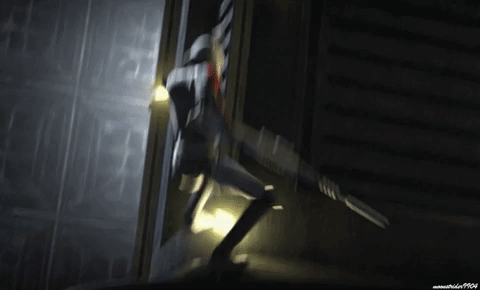

Most Artemis people, especially in their early adulthood, are engrossed in their work or causes. Marriage and childbearing are often far from their minds, or they outright reject them. Though, they like children and are extremely protective of children, like a mother bear who ferociously protects her young. They also prefer to foster independence in children. There are headcanons that Crosshair is not interested in getting married and having children, or he is alright with marriage but chooses to be childfree. These are traits of his Artemis anima. Moreover, Crosshair is not much of a parental figure in the beginning possibly because he views Omega as a dependent, passive child, which is not ideal for an Artemis person. However, as Omega becomes more independent, active and assertive, it is possible for Crosshair to become protective of her while encouraging her to be independent.
A relationship with an Artemis person, be it platonic or romantic, usually resembles the sibling relationship, friendly rivals or the Artemis-Apollo twinship. Their desire to maintain independence in a relationship means they are not drawn to dominating partners and they are not interested in playing the parental role. Their partner is usually their equal with shared or complementary interests, or is the one who nurtures them like teaching them to be more considerate and sensitive. If the Artemis person and their partner are both competitive, they must be careful not to let their competitive nature kill off their relationship, which parallels the myth of Artemis and Orion, where Orion was killed due to Artemis being goaded to take on Apollo’s challenge. Some people do view Crosshair as a person who will treat his partner as his equal instead of dominating them (which is associated with his Poseidon archetype), and his partner is usually as competitive as him, or a nurturing person who opens him up. Crosshair has a strong connection with the Bad Batch, and he is shown to share a friendly competition with Wrecker during the Clone Wars. I interpret Crosshair and Tech having the Artemis-Apollo twinship due to both of them being similar yet different from each other. Crosshair mostly has a brother-sister dynamic with Omega, who usually helps him to be more considerate and sensitive to his feelings.
In the myths, Artemis never suffered but she did bring harm to those who offended her. Similarly, people who identify themselves strongly as Artemis usually cause others to suffer rather than hurting themselves. If an Artemis person is raised to look down on traditionally feminine values, she may develop a contempt for vulnerability and dependency. Her relationships with others are marked with emotional distance and the usual physical unavailability. She may lose interest once her partner wants to get close to her emotionally, or becomes dependent on her, which are seen as “weaknesses” to her. She may even be cruel to her loved ones, treating them as unwanted intruders. Hence, it is important for an Artemis person to realize the importance of love and trust of a special person.
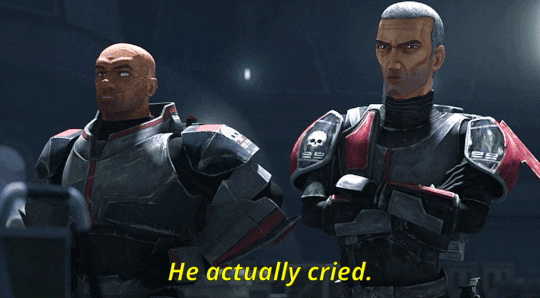
In “Aftermath”, Crosshair expresses his contempt for vulnerability upon seeing Hunter disobeying orders to save Omega. He also dislikes Omega trying to get close to him. It is likely that his inhibitor chip has affected him – possibly strengthening his Artemis anima to the point of becoming cold and cruel. However, he still retains the same contempt for vulnerability even without the influence of the inhibitor chip. In “Return to Kamino”, Crosshair tries to take Omega away from the Bad Batch and he tells Hunter to stop pretending to be a father figure to her because “that is not who he is”. In “Kamino Lost”, Omega tries to connect with Crosshair but he pushes her away again. Fortunately, Crosshair overcomes his contempt for vulnerability after receiving the love and trust from Commander Mayday in “The Outpost”.
Artemis has been called “the Far-Distant Artemis”, and this archetype is marked with emotional distance. This means Artemis people can become so focused on their own goals that they fail to notice the feelings of other people and can get offended by those who interrupt their focus. Their lack of attentiveness can make people who care about them feel insignificant and excluded. To grow beyond this archetype, Artemis people must learn to pay attention to others and be a good listener. They must also remain in touch and accessible to those who care about them.
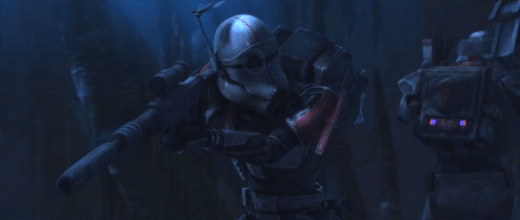
When Order 66 happens, Crosshair’s inhibitor chip is somewhat activated. He becomes adamant of following orders, which leads to conflict between him and the rest of the Bad Batch (especially Hunter). He does not understand why they choose to disobey orders, and he even sighs in frustration when Hunter tells him to stand down in “Aftermath” as if Hunter is interrupting his focus to carry out the order. When Crosshair joins the Empire, he becomes “inaccessible” to the Bad Batch. In “Return to Kamino” and “Kamino Lost”, Crosshair reveals that he already has his inhibitor chip removed and that he willingly joins the Empire. This realization hurts the Bad Batch because it means that Crosshair chooses not to come back in his own volition because he prioritizes his role as a soldier of the Empire. Although Crosshair remains mostly closed-off from other clones, Commander Cody’s advice does affect him in “The Solitary Clone”. Later, in “The Outpost”, Commander Mayday helps Crosshair to open up and become more accessible to him.
Artemis is known to be merciless. In one myth, the hunter Actaeon accidentally saw Artemis and her nymphs bathing in a hidden pool. The goddess turned him into a stag and he was later torn to pieces by his own hounds. In another myth, Niobe insulted Leto by bragging that she had many sons and daughters, unlike Leto who only had two. Leto called on Artemis and Apollo to avenge her without mercy. With their bows and arrows, Apollo killed Niobe’s six sons while Artemis killed Niobe’s six daughters, and Niobe was turned into a weeping pillar of stone.
People who strongly identify as Artemis are extremely loyal to others, tend to get angry at injustice, unafraid to express their point of view, and have a tendency to take action. These are positive traits of Artemis, but there is also a tendency to mercilessly judge the actions of others in an absolute black and white. From this perspective, not just an action is either entirely bad or entirely good, but the person who does the action is also either all bad or all good. With that, an Artemis person feels justified to retaliate or punish the person.

Crosshair is extremely loyal to the Bad Batch. However, when they leave him behind on Kamino, he feels betrayed and view them as bad people. In “Reunion”, Crosshair is determined to hunt the Bad Batch down as they have been branded as traitors to the Empire. In “Return to Kamino”, Crosshair offers the Bad Batch to join the Empire, but they refuse, which from his perspective, makes them all bad people. That is why he tells them not to make the same mistake twice and not to become his enemy. In “Kamino Lost”, Crosshair views Hunter as a bad leader because he has caused the Bad Batch to disobey orders, run away from the Empire and now they are trapped under Tipoca City that is sinking to the ocean floor. In “The Solitary Clone”, Crosshair calls the clones who are questioning orders as traitors like the Jedi because from his perspective, a good soldier follows orders without question, and even a slight tendency to question orders is considered an entirely bad thing, and it makes the soldier a completely bad person.
It is important for an Artemis person to develop compassion and empathy, which may come with maturity and experience. Many Artemis people enter adulthood feeling self-confident and invulnerable. However, after going through suffering, being misjudged or failing at something, they may grow to become more compassionate. They will learn to be more merciful as they learn what it is like to be vulnerable and become more understanding, they realize that people are more complex than they think, and they learn to forgive themselves and others for making mistakes.

Crosshair has always felt confident and invulnerable. He does not believe that he would be replaced by the Empire because of his superiority. He turns a blind eye at the regular clone troopers, who are feeling the plight of being forced into “retirement”. However, that all changes when Crosshair goes through suffering in “The Outpost”. He learns how to be vulnerable to Mayday, which makes him more understanding and compassionate towards the regular clone trooper. This helps Crosshair to become more mature, and realize that the Empire does not care about the clones, including him. Hopefully, Crosshair can learn to forgive himself for making the mistake of joining the Empire and disappointing the Bad Batch.
The goddess Artemis is known for her destructive aspect that is symbolized by the wild boar, one of the animals sacred to her. In Greek mythology, Artemis sent the Calydonian Boar to terrorize the countryside of Calydon because King Oeneus had failed to honour her in his rites to the gods. The Calydonian Boar was described to have burning, bloodshot eyes, thick bristles that stood like sharp spikes, hide tougher than armour, and tusks similar to those of Indian elephants. It trampled vineyards and crops, drove away flocks and herds of animals, and killed many heroes who had tried to bring it down. This rampaging destruction serves as a metaphor for an Artemis person on a warpath.
The rage of Artemis is surpassed only by that of Hera. Although both goddesses appear to share the same intense feelings, the provocation and the direction of the anger are different. A Hera person directs their rage at “the other woman”, while an Artemis person directs their rage at people (mostly men) for depreciating them or for disrespecting something they value. The rage of Artemis can be observed in people reacting to injustice with intense hostility that is often out of proportion to the particular provocation, which leads to a rampage similar to the Calydonian Boar, hurting themselves and many like-minded people along the way.

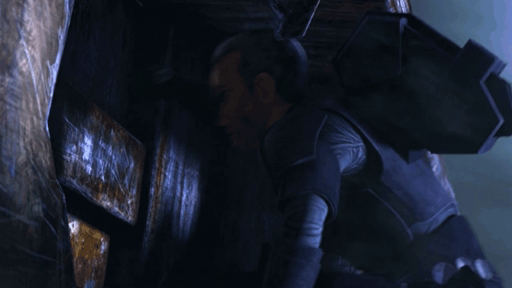
After the Bad Batch leaves Crosshair behind, he is greatly offended by their betrayal and for throwing away their legacy. He hunts them down as if he is like Artemis on a warpath. His rampage causes injuries to himself and his troops. In “The Outpost”, Crosshair is furious that Lieutenant Nolan refuses to provide medical aid to Mayday because “they should not waste the Empire’s resources on a clone”, resulting in his death. Crosshair reacts to the injustice with intense hostility and he shoots Lieutenant Nolan, instantly killing him. However, Crosshair’s action causes him to end up on Mount Tantiss, where he gets experimented and tortured by Dr. Hemlock.
In the myth of the Calydonian Boar, the huntress Atalanta faced the charging boar with a bow and an arrow, or in some versions, a spear. She waited until the boar was almost on her, took careful aim, and then shot the arrow or threw the spear through an eye, which was its only vulnerable spot. Her action successfully wounded the boar. According to Jean Shinoda Bolen, the destructive rage of an Artemis person can only be stopped by what Atalanta did in this myth. The Artemis person must take courage to confront their own destructiveness directly. They must see it as an aspect of themselves that must be stopped before it consumes them and devastates their relationships. They can no longer feel righteous and powerful when they realize how much damage they have done to themselves and others. Humility is what returns their humanity as they become aware that they are flawed humans, not an avenging goddess.
When Crosshair gets angry, he reacts by taking action. However, his actions sometimes hurt himself and others. For example, his decision to hunt the Bad Batch down because he feels betrayed by them worsens the rift between them. By killing Lieutenant Nolan to avenge Mayday’s death, Crosshair ends up being imprisoned on Mount Tantiss and is subjected to experimentation and torture. It is important for Crosshair to realize how destructive his rage is, and how it hurts him and others. He must learn not to let his rage consumes him, and instead become aware that he too is a flawed person.
The myth of Iphigenia depicted the crucial choice an Artemis person would make in their lives. In this story of the Trojan War, the Greek ships had been assembled to set sail for Troy, but no winds arose to fill the sails and carry the fleet to war. Agamemnon, the leader of the Greeks, believed that it was the doing of a god, so he consulted the expedition’s seer. The seer explained that Agamemnon had offended the goddess Artemis on his way to the Trojan War by hunting and killing one of her sacred stags, and she punished him by withholding the winds. The seer stated that the goddess could only be appeased by the sacrifice of Agamemnon’s daughter Iphigenia. At first, Agamemnon resisted, but as pressure from his troops mounted, he tricked his wife Clytemnestra into sending Iphigenia to him, on the pretext that she was to be married to the Greek hero Achilles. Instead, she was prepared for the human sacrifice in exchange for the winds. There were two types of endings for this myth. One version stated that the death of Iphigenia was carried out as demanded by Artemis. In the alternate version, Artemis interceded just at the point of sacrifice, substituting a stag in her place, and carried her off to Tauris, where she became one of Artemis’s priestesses.
Jean Shinoda Bolen interprets these two endings as the possible effects of the Artemis archetype. She believes that every Artemis person likely has certain traits of Iphigenia — young, trusting, vulnerable, receptive, nurturing, the ability to relate to others, the ability to be intimate with others, dependent on others, and the willingness to make sacrifices for the sake of others. On one hand, the Artemis archetype rescues these traditionally feminine values from the devaluation and oppression of the patriarchy, like Artemis rescuing Iphigenia. On the other hand, the Artemis archetype makes a person so intensely focused on their goals that they sacrifice and devalue these traditionally feminine values, like Iphigenia was sacrificed to appease Artemis so the winds could bring the Greek fleet to war.
With that, an Artemis person is faced with a crucial choice: Will they rescue and protect this Iphigenia part of themselves so that it can grow even as they continue with their life and pursue their goals? Or will they be required to kill this Iphigenia part of themselves in order to be as focused, hard and clear as possible?
The myth of Iphigenia is depicted in “Kamino Lost”. Omega represents Iphigenia for she is young, receptive, vulnerable and dependent on others. Hunter also represents some traits of Iphigenia for he is nurturing and he cares deeply for Omega. These values are deemed as traditionally feminine. In this episode, Omega is unwilling to lose AZI so she swims after the droid. Hunter wants to enter the water to save Omega because she is about to drown. At this moment, Crosshair pulls out his rifle and it seems like he is aiming at Hunter, which is why Wrecker, Tech and Echo point their blasters at him. This scene seems to depict the possibility of Crosshair choosing to “sacrifice Iphigenia”, which is “to eliminate Hunter and let Omega drown”. After all, the episode has shown that Crosshair still has conflicts with Hunter and he continues to push Omega away, which can be interpreted as Crosshair devaluing these traditionally feminine values in favour of the Empire and his soldier’s duty.


When it seems that Hunter is in danger and Omega is about to drown, Crosshair is actually aiming at the water and he shoots a grapple that latches onto AZI, allowing him to pull Omega and the droid to the surface. Crosshair’s action to save Omega’s life represents his Artemis anima choosing to “save Iphigenia”, which can be interpreted as Crosshair rescuing and protecting these traditionally feminine values. His action indicates that there is still good in him, and that he can be vulnerable, receptive and nurturing.
To grow beyond the Artemis archetype, one must learn to become vulnerable, to love and care deeply about another person. This usually happens after the Artemis person has “run down”, after they have achieved or failed their goals, or after the pursuit has gone stale. The people who care about the Artemis person may have to wait, or they can get some help from Aphrodite.
The Atalanta myth serves a metaphor for the psychological growth that an Artemis person may go through. Atalanta was a huntress and runner whose courage and capabilities were equal to any man’s. She was left on a mountaintop to die by her father soon she was born. She was then saved by a bear and raised by hunters. She grew up to be a beautiful woman and she devoted herself to the goddess Artemis. A famous hunter named Meleager became her lover and companion. They played an important part in the Calydonian boar hunt where Atalanta successfully wounded the boar and Meleager finished it off. Since Atalanta had drawn first blood, Meleager offered the boar skin to her as a prize. However, Meleager’s uncles, who had been hunting with them, thought it was disgraceful that a woman should get the trophy where men were involved. They tried to take the skin for themselves and claimed the credit for killing the boar. Meleager was outraged by this and he killed them, which then resulted in his mother killing him shortly thereafter.
Atalanta then left the wilderness, and was eventually reunited with her father. Her father recognized her as heir to his throne, and insisted that she should get married, which was something she was not interested of. Many suitors came to win her hand, and she rejected them all. As her suitors became more persistent, she came up with a challenge for them: she would marry the man who could beat her at a footrace, but he would lose his life if he lost the race. Race after race, Atalanta was always in the lead. Finally, the unathletic Hippomenes, who truly loved her, entered the race. He prayed to Aphrodite, the Goddess of Love and Beauty, for help at the night before the race, and she gave him three golden apples to use in the race. During the race, Hippomenes threw the three golden apples in Atalanta’s path three times, which managed to distract her long enough for him to cross the finish line first and take her as his wife.
The Atalanta myth, or more specifically the deadly footrace, is played out in “The Outpost”, and it helps Crosshair to grow beyond his one-sided Artemis anima and achieve wholeness. There are no official explanations as to why Atalanta is distracted by the three golden apples, but Jean Shinoda Bolen provides her own interpretations for the three golden apples, which surprisingly match Crosshair’s character arc in “The Outpost”.
When Hippomenes threw the first golden apple and Atalanta went to take it, she saw her own face distorted by the curves of the apple. The first golden apple is interpreted to have given her the awareness of time passing. Many Artemis people are unaware of time passing until their desire to take up challenges or to reach their goals dwindle. They may become aware that they are not going to be eternally youthful and start reflecting about their course of life. At the beginning of “The Outpost”, Crosshair observes three clone troopers protesting their “forced retirement” due to the Defense Recruitment Bill has been passed by the Senate. Upon arriving at the outpost, Crosshair meets Commander Mayday, who has been guarding the cargo held in the outpost for a year, and has been expecting reinforcements 36 rotations ago. By witnessing the clones being forced into retirement and realizing that a year has passed since the formation of the Empire, Crosshair becomes aware of time passing, and that soon enough, he would be replaced by Stormtroopers, as it is the fate of all clones.
When Hippomenes threw the second golden apple, Atalanta went to retrieve it, and memories of her dead lover Meleager took over her. The second golden apple is interpreted to raise awareness of the importance of love. As yearnings for physical and emotional closeness are stirred by Aphrodite, an Artemis person may become more receptive to love and intimacy, and this feeling is strengthened by the awareness of time passing.

As Commander Mayday gives Crosshair a tour of the depot and its surroundings, he explains that they have been attacked by raiders who have caught them off guard in the last few raids. Mayday believes that the polar conditions have degraded the sensors, which may explain how the raiders get past them. To make matters worse, he is not receiving any replacements from the Empire. At this moment, Crosshair probably starts to recall memories of Hunter and Tech. Hunter would have been able to detect the raiders quickly thanks to his enhanced senses, and Tech would have upgraded the sensors to make it difficult for raiders to get past.
When Crosshair steps on a pressure mine, Mayday goes ahead to disarm it despite he is not an explosive expert and that he does not have the proper equipment to do so. However, he is able to improvise with the tools he has. At this moment, Crosshair probably starts to recall memories of Wrecker. Wrecker is an explosive expert, and he would have the proper equipment to disarm the pressure mine with ease. While Mayday disarms the mine, he asks Crosshair about his unit. This prompts Crosshair to mention that he was part of Clone Force 99, but they are gone. As he recalls the memories of his former squad, he probably begins to yearn for their presence and support. He probably starts to yearn for physical and emotional closeness, which is why he becomes closer to Mayday.
As Atalanta was about to pass Hippomenes and win the race, he dropped the third golden apple. For a split second, she hesitated: should she cross the finish line and win the race, or take the apple and lose? She chose to reach for the apple just as Hippomenes crossed the finish line, winning the race and her for his wife. The third golden apple represents procreative instincts and creativity, which are associated with Aphrodite. In life, there may come a time where achievements become less important to the Artemis person. They may shift their focus to other things like settling down and having a family, or transforming their experiences into some form of personal expression. They start to follow their heart more.
Crosshair and Mayday are sent to retrieve the cargo stolen by raiders. They are successful but they get caught in an avalanche. Crosshair digs himself out of the snow and finds Mayday injured. Mayday tells Crosshair to go because he is not going to make it. Crosshair now must make a choice: should he complete the mission and leave Mayday to die, just like he has said earlier, “no point of carrying deadweight”? Or should he abandon the mission and save Mayday’s life? Just like Atalanta gives up winning for Hippomenes, Crosshair gives up the mission for Mayday. Crosshair is well-aware that he will be reprimanded for not completing the mission, and his icy-cold reputation will certainly be tarnished. However, as he starts following his own heart, his brotherly love for Mayday wins over his ego and his tendency to follow orders.
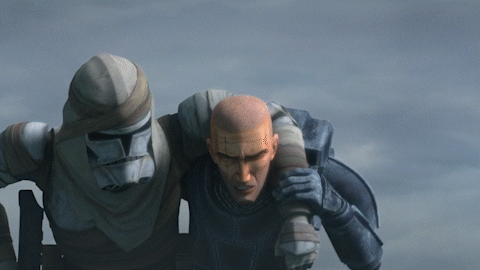
Jean Shinoda Bolen believes that the knowledge of Aphrodite can be brought through the love of another person, which can help an Artemis person to move beyond the one-sidedness of this archetype and achieve wholeness. The Artemis person can turn inward to reflect on what is important to them, and be inner-directed as well as outer-focused. They may realize their needs for intimacy as well as for independence. Once they embrace love, they will have moments to decide for themselves what is most important.
In “The Solitary Clone”, Crosshair begins to turn inward to reflect on what is important to him after Commander Cody tells him that they make their own decisions and choices, and they have to live with them too. Crosshair’s brotherly love for Mayday is what pushes him further to turn inward for reflection. From here, he decides that his loyalty to his brothers (and his sister Omega) and his protectiveness towards them mean the most to him. With the Empire not seeing eye to eye with him, Crosshair finally turns against the Empire.
Besides Artemis, Hera is another prominent archetype in Crosshair’s anima. Hera, or Juno as the Romans called her, is the Goddess of Marriage. She is the wife of Zeus (or Jupiter by the Romans), the chief god of the Olympians, who rules over the heavens and earth in Greek mythology. Her name is thought to mean “Great Lady”, which is the feminine form of the Greek word “hero”. Her symbols are the cow, the cuckoo, the Milky Way, the lily, and the peacock (and its iridescent tailfeather “eyes” that symbolized Hera’s watchfulness). Hera has two contrasting aspects: she is greatly revered and worshipped in rituals as a powerful goddess of marriage, and she is depicted as a vindictive, quarrelsome, jealous shrew due to Zeus’s infidelity.
In her rituals, Hera had three epithets and three corresponding sanctuaries where she was worshipped during the year. In the spring, she was Hera Parthenos (Hera the Maiden or the Virgin). She was celebrated as Hera Teleia in the summer and autumn (Hera the Perfected One or the Fulfilled One), and became Hera Chera (Hera the Widow) in the winter. These three aspects of Hera represented the three states of a married person’s life (or more specifically, a woman’s life in Ancient Greece): in spring, they were single; in summer, they felt completed through a wedding; in winter, they grieved at the end of their marriage due to separation or death of their partner.
Hera is the wife archetype that prompts a person to get involved in a committed relationship and to get married. People who identify strongly as Hera view marriage as a way to gain prestige, respect and honour. They want to be recognized as “someone important”, and they seek out outer acknowledgement by having a large wedding ceremony. They find joy, fulfilment and completeness in marriage, in which they see it as sacred. Just like Hera is married to Zeus, people who identify with the Hera archetype are attracted to competent, successful people like rulers, businessmen or politicians. They are usually not into artists, scholars or humanitarians. Their choice in partners comes from their view of marriage as something that provides comfort and security to their lives. Besides that, some Hera people may view marriage as a way out of a bad situation, especially if their parents resemble Hera’s parents Cronos and Rhea – a patriarchal, dominating father and a powerless mother.
There are many headcanons that Crosshair enjoys security and comfort in his life, which are granted by the Republic’s support. The Republic provides necessities to all the clone troopers such as food, shelter, payment, weapons, training and transport. With that, Crosshair may feel ease to do other things. Many fans agree that Crosshair is the most fashionable of the Bad Batch, and he likes to wear jewellery. He may indulge in the best fabrics for comfort like wearing a pair of sleepwear and/or eye mask that are made of silk. He likely cares about his appearance greatly, which leads to a headcanon that he uses a loofah (suggested by a fan) or a pumice stone (suggested by the person running the Star Wars twitter account) during showers for he cares about his skin. These headcanons evoke the imagery of the Hera archetype in Crosshair – pompous, feelings of superiority and likes attention – basically, a prima donna. He probably gets jealous at Omega because she captures all the attention of the Bad Batch in “Aftermath”.
There are also headcanons that Crosshair likes to indulge the Bad Batch like bringing them to the best restaurants on a planet, buying things they like, or crafting things for them. The writers have come up with a headcanon that Crosshair is the one who creates Lula for Wrecker. I also have a headcanon that Crosshair creates Lula after the Hyperspace Stories #10 because Wrecker has lost the stuffed toy and Crosshair wants to cheer him up. I can imagine Crosshair buying something delicious for Wrecker to eat, getting the best equipment for Tech, and choosing the most comfortable fabric for Hunter to wear as a casual outfit. In “Aftermath”, Crosshair is shown to desire orderliness and cleanliness as he complains about the smell getting worse in the squad’s barracks, and that his bed is spotless and tidy (even his blacks are folded neatly). I have this headcanon that Crosshair is mainly responsible for the orderliness and cleanliness of the Marauder, and that Echo’s arrival has helped to ease most of his burdens. For example, Crosshair makes sure the floors of the Marauder are clean of dirt, dust, mud and food crumbs. He makes sure the lights and ventilation are working properly. He washes their blacks regularly and keeps a tab on their toiletries. He does all of these for everyone’s comfort, including himself.
I have seen people shipping Crosshair with a character that is of a higher status than him like a Jedi, a senator, or a politician, which kind of evokes the imagery of Hera and Zeus. There are many romantic headcanons for Crosshair that evoke the Hera archetype, for example, he buys something that his partner yearns to have regardless of the price, or he creates something for his partner to show his love and devotion. People who identify as Hera tend to share the same friend group and interests with their partner, even when they initially do not like them. It is a general headcanon that Crosshair will reluctantly do an activity with his partner because he prioritizes his partner’s needs and wants over his, which is a Hera trait. I have seen one headcanon that Crosshair is willing to give his partner children if his partner wants them, which is also a trait of the Hera archetype.
People who identify strongly as Hera find fulfilment in playing the role of a housewife or a househusband. They can take care of everything in the house while their partner is away for work. Since Crosshair has some traits of the Hera archetype, it is possible for him to play the role of a househusband well. Imagine yourself coming back home from a long, tiring day of work, and you find that Crosshair has cleaned the entire house, done the laundry, cooked your favourite meal, prepared a bubble bath for you, and planned to give you a body massage to help you relax before you go to sleep. Basically, Crosshair can be a devoted partner that pampers and spoils you, making you feel that you are the most important person in his universe.
The Hera archetype grants a person the capacity for commitment. They are loyal and faithful to their partner, and they are willing to endure and go through difficulties with their partner. They are the ones who stay “for better or worse”, and they are willing to drop everything for their partner. Loyalty means everything to the clones, and Crosshair takes it very seriously. Crosshair is extremely loyal to the Bad Batch, and he will do anything for them. In “The Bad Batch”, when Rex takes charge of the mission after Cody is injured, Crosshair sees it as Rex challenging Clone Force 99 for authority, or more specifically, challenging Hunter’s leadership role. This causes Crosshair to defend Hunter and Clone Force 99 by pointing out that Cody has called them in to help Rex, so Rex has no right to challenge their authority. This scene evokes an image of a Hera person fiercely defending their partner. I can imagine Crosshair leaving the last ration bar for Wrecker, placing a warm blanket on Tech when he has fallen asleep on his desk, and giving Hunter a hug upon seeing how work has overwhelmed him. Crosshair always gives his best to his loved ones, and puts their needs above his.

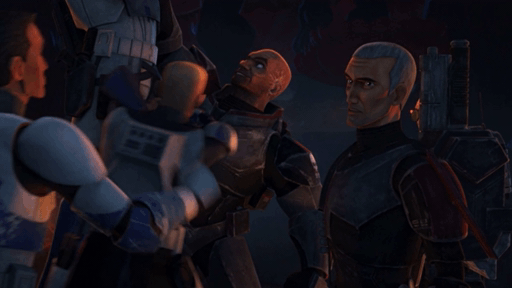

In Greek mythology, Zeus got close to Hera by turning himself into a shivering little bird. Hera took pity of the bird and brought it close to her body to warm it up. Then, Zeus revealed himself as the chief god and made a promise to marry her, in which she accepted. People who identify strongly as Hera may find themselves attracted to powerful and successful people that are also emotionally immature like Zeus. This emotional immaturity is what makes a Hera person to view them as “a poor little creature in need of Hera’s warmth and protection”. This caring trait of Hera can be seen in Crosshair. Although Crosshair can get annoyed at Wrecker’s antics (even telling him to “grow up”), his complaints are never taken seriously by anyone. In “The Bad Batch”, when Jesse defends Rex from Crosshair, Wrecker grabs and lifts him by the throat. Crosshair then defends Wrecker by warning Kix to stay out of it and fights him. This shows that Crosshair is not just protective of Wrecker, he is also enabling Wrecker’s impulsiveness. In “Aftermath”, Crosshair complains about the smell in their barracks and he does not like their laziness on cleaning up the mess. Yet, his complaints are treated as passing comments, and he does not try to change the Bad Batch. He probably grumbles while cleaning up the mess they have created, as if he is just tolerating their bad habits. The Bad Batch probably even sees it as a hobby for Crosshair that is not sharpshooting. Just like how Hera views Zeus in his poor little bird form, it is possible that Crosshair views Hunter, Tech and Wrecker as “poor little boys” in need of his warmth and protection. He feels the need to fiercely defend them from criticisms and insults, and he does not feel the need to change them at all, even if their antics do annoy him.


When the goddess Hera was worshipped in Greek temples and the marriage of Zeus and Hera was ritually enacted, Zeus was called Zeus Teleios, which meant “Zeus, Bringer to Fulfilment”. With that, a Hera person unconsciously places an archetypal expectation of fulfilment on their partner, with the assumption that they will be transformed by marriage. This tendency to project an image of an idealized partner onto a person can usually lead to disappointment, criticism and anger from the Hera person, causing them to urge their partner to change.
To a Hera person, a happy marriage means that their partner is devoted to them, placing their marriage first, and appreciating them as their wife or husband. However, a Hera person is usually drawn to people like Zeus, who are devoted to their careers. A Zeus person usually uses marriage to boost their social image by marrying someone from the same class or higher than his, and they can appear side by side in public. This type of marriage is a personal disaster for a Hera person due to their partner’s lack of involvement and concern of her. Yet, no matter how dissatisfied the Hera person feels about the marriage, they are the least likely to seek divorce and instead, they choose to bury their feelings by putting on the image of a perfect couple.
People who identify strongly as Hera have a tendency to place their relationship with their partner above everything else. They believe in marital promises of eternal devotion and they are willing to make sacrifices for their partner. They can give up their education to be a full-time wife or husband for their partner, get a job to support their partner, or relocate to another town or country if their partner wants to move. Hera people usually do not maintain family ties and friendships made before marriage. They are usually not close with their own children since they tend to prioritize their partner over their children. They also do not maintain their own interests prior to marriage. They instead make themselves conform to their partner’s life, interests and friends. These constraints can lead to problems for a Hera person, and they are made worse if their partners do not give them support to grow beyond the Hera archetype.
The Hera archetype can be such an overwhelming force that it oppresses people, and it turns people into oppressors. This archetype may make an unmarried person feel incomplete and they may end up in a bad marriage. This archetype may also cause a married person to stay in a bad marriage no matter how damaging it is to them. They may constantly nag at their partner for failing to live up to the image of Zeus who fulfils, or they may become enraged and jealous if their partner is unfaithful – be it in a factual or an imaginary scenario.
Whenever Zeus cheats on Hera, the goddess does not channel her rage towards her husband. Instead, she channels her destructive and vindictive rage at the other women (e.g. Callisto, Io, Leto, Aegina), at children conceived by Zeus with other women (e.g. Heracles, Dionysus), or at innocent bystanders (e.g. Echo). Just like the goddess, Hera people tend to judge and punish other people by excluding or ostracizing them and their children, all because they do not meet Hera’s standards. Hera people are judgemental towards people who are unmarried, sensual, or divorced because they are seen as “a threat” that can attract their married partner. Hera people are also judgemental towards people who are not personally threatening like unmarried mothers on welfare.
These disappointed expectations, constraints and judgmental attitude from the Hera archetype can be seen in Crosshair. In “Aftermath”, Crosshair does not see the difference between the Republic and the Empire because their roles as soldiers are being maintained. He expects the Bad Batch to stay as soldiers because that is what they are made for, and that is the only acceptable role for them. Besides that, Crosshair looks down on the regular clone troopers and does not like to work alongside with them because he sees himself and the Bad Batch as more superior than them. Of course, his decision to ostracize the regular clone troopers is also due to him and the Bad Batch are constantly bullied by the regs. When Omega approaches the Bad Batch and sits with them, Crosshair is not welcoming towards her. He sees her as a child, and that she should not hang out with soldiers like them.

Crosshair becomes extremely disappointed at Hunter when he chooses to disobey orders and he starts to prioritize Omega’s safety. To him, good soldiers should follow orders, and Hunter is breaking it. Crosshair’s bitterness towards the Bad Batch grows when they leave him on Kamino and they have taken Omega with them, giving the feeling that he has been replaced. Although he is furious at the Bad Batch, he does not channel his destructive rage towards them, even though the Bad Batch thinks that he is trying to kill them. Instead, he channels his destructive rage towards other people. In “Replacements”, Crosshair executes ES-01 for insubordination and he orders the rest of the Elite Squad Troopers to execute innocent civilians, in which the Bad Batch has failed to do so earlier. In “Reunion”, Crosshair dismisses the Bad Batch for scavenging like rats since they no longer have a stable financial support after deserting the Empire. For Crosshair, being a soldier is the only truly acceptable role for a clone trooper. The life of a mercenary or a bounty hunter is a definite “no” for him and for any clone trooper.
In “Return to Kamino”, Crosshair kills his own Elite Squad Troopers for refusing to stand down as he has ordered. He offers the Bad Batch to join the Empire to have a purpose again. Moreover, he tries to take Omega away from the Bad Batch, even telling Hunter to stop pretending to be a father figure to her, which in Crosshair’s eyes, is something Hunter is not. When the Bad Batch refuses Crosshair’s offer, he gets angry at them, warning them not to make the same mistakes twice and not to become his enemy. Despite witnessing and surviving the destruction of Tipoca City caused by the Empire, Crosshair still chooses to stay loyal to the Empire, and not even Hunter’s advice can get to him.
In “The Solitary Clone”, Crosshair is seen to be eating his meal alone as other regular clone troopers move away from him. It is true that regular clone troopers usually have issues with “defective” clones like Crosshair, but Crosshair’s tendency to limit himself to only the Bad Batch also now becomes a side effect as he is no longer with his former squad. He has nobody close to him in the Empire. Although Commander Cody is a close friend of Crosshair, his eventual desertion wounds Crosshair, causing him to further shut himself off. Furthermore, Crosshair still chooses to return to the Empire despite being stranded on Kamino for 32 rotations, claiming that he is a soldier of the Empire. Even though Crosshair later becomes aware that the Empire is not treating the clones well, he finds himself unable to desert the Empire and his role as a soldier, just like a Hera person finds themselves unable to leave an abusive relationship or marriage.
The Medea syndrome, which originates from the Greek mythology character Medea, describes the spurned woman, which is the negative Hera pattern. The Medea myth is a metaphor that describes the Hera woman’s capacity to put her commitment to a man ahead of everything else, and her capacity for revenge when she finds that her commitment counts for nothing in his eyes.
In the myth, Medea was the priestess and daughter of King Aeëtes of Colchis. The Golden Fleece belonged to the king, and Jason and the Argonauts sought it. Jason needed help to obtain the Golden Fleece as it was well-guarded, and that he needed to complete three seemingly impossible tasks given by the king in a single day. His patron goddesses, Hera and Athena, managed to persuade Aphrodite to make Medea fall in love with him and help him steal the Golden Fleece. Jason begged Medea to help him and promised that he would marry her. So, out of her love and loyalty to Jason, Medea helped him steal the fleece. By doing so, she betrayed her father and her country, and brought about her brother’s death. She fled with Jason, and they eventually settled in Corinth. They got married and had two young sons.
Since Medea was a foreigner, her position was similar to that of a common-law wife. Jason wanted a better life, so he decided to marry Glauce (or Creusa), the daughter of King Creon of Corinth. As a condition for the marriage, Jason agreed that Medea and their children would be exiled. Medea was enraged with Jason for breaking his vows, and she felt humiliated that all her sacrifices and crimes committed for him meant nothing to him. With that, she plotted and carried out her revenge.
First, Medea sent Glauce a gown and a golden coronet that were covered with poison as wedding gifts. Once Glauce put them on, she was burned to death. Her father tried to save her, but he was also burned to death. Then, Medea was in conflict between her love for her children and her desire for revenge. Ultimately, her desire for revenge won, and she murdered her children. When Jason learned of her vengeful plot, Medea fled to Athens in a golden chariot driven by dragons sent by her grandfather, the god of the sun Helios. Despite all the crimes Medea had done, she retained the favours of the gods. As for Jason, since he broke his oath to love Medea forever, he lost favour with Hera and he died alone and unhappy. His story ended with a rotting prow of the Argo breaking off and crushing him in his sleep.
Literal reenactments of the Medea myth are rare, but they are quite common on a metaphoric level. When a person is influenced by Hera and Aphrodite like what happened to Medea, their instinct to mate and their passion for their loved one may cause them to put that relationship above everything. They may leave their family and friends, betray their own values, and cut off any ties if necessary. They will not have any help or support if their partner behaves like Jason.
The Medea person may imagine or attempt to harm their partner’s lover. For example, “Medea” may spread lies to damage the reputation of the other woman or man. Moreover, the Medea person may attempt to destroy their children’s relationship to their partner. They may take the children away, or make efforts to drive their partner away from the children. They may even make their children hate their other parent. It is worth noting that Medea did not murder Jason in the myth. Similarly, the hostile, spurned Hera often harms other people more than the partner who left them.
Crosshair shows his Hera’s destructive rage and the Medea syndrome in “Return to Kamino” and “Kamino Lost”. When Hunter says that they are loyal to each other and not the Empire, Crosshair counters that Hunter is not loyal to him and he has not forgotten that time the Bad Batch left him behind on Kamino. Crosshair is also bitter that the Bad Batch has thrown away their legacy. I have seen headcanons that Crosshair is willing to make tremendous sacrifices for his squad, which aligns with Hera’s capacity for commitment. When the Bad Batch leaves him behind, Crosshair must have felt that all of his devotion and sacrifices mean nothing to his squad. This incident leads him to take on the hostile, spurned Hera archetype.
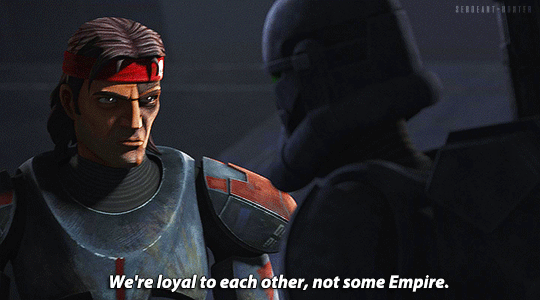
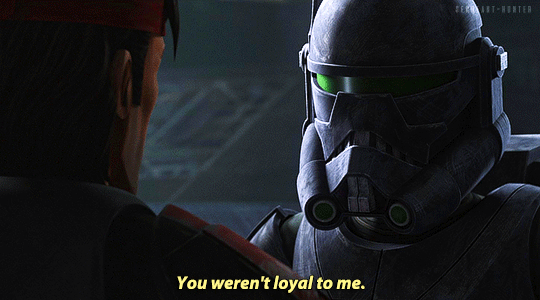
Furthermore, Crosshair tries to take Omega away from Hunter and send her on a shuttle off-world. Hunter pleads with Crosshair not to do it because Omega belongs with the Bad Batch. However, Crosshair says that Omega is in constant danger from living among fugitives like the Bad Batch, and he is doing this for her own good and for the Bad Batch too. Crosshair even tells Hunter to let go of Omega and stop pretending to be something that he is not – a father figure to the child. This argument evokes the metaphoric reenactment of Medea and Jason, where Crosshair is the “Medea” that threatens to take the child Omega away from Hunter the “Jason”. True to Hera’s destructive rage, Crosshair has no intention of killing the Bad Batch despite their alleged treason and their disloyalty towards him. Instead, he kills his Elite Squad Troopers for refusing to stand down.
To grow beyond the Hera archetype, one must recognize Hera’s influence and understand the susceptibilities of this archetype. It is crucial for a Hera person to expand beyond the Hera archetype. They must realize that this archetype at best limits them, and at worst is destructive to them. They must consciously develop other archetypes, which can enrich their life and marriage, and give them the ability to adapt if death or divorce brings the marriage to an end.
Besides that, a Hera person should view marriage as a growth experience instead of an expectation of fulfilment. An insecure Hera person is highly susceptible to jealousy, and they can easily suspect infidelity or feel humiliated by their partner’s inattention. They may alienate their partner with accusations or make their partner be more aware of the effects of their indifferences. Their partner may learn to respond to the Hera person’s needs with compassion. The Hera person must repeatedly decide whom to trust – the suspicious Hera within or their partner. To grow, they must resist Hera and give their partner credit for support and fidelity.
In the myths, Hera has two sons – Ares, the God of War, and Hephaestus, the God of the Forge. Hera favoured Ares, and “like mother, like son”, Ares’s uncontrollable fury on the battlefield mirrored Hera’s uncontrollable vindictiveness. When a Hera person struggles with their vindictiveness and rage, they can transform their rage and pain into creative work by following the example of Hephaestus, whose wife Aphrodite was repeatedly unfaithful to him. Any kind of work, be it mental or manual, can help the Hera person to channel their rage in a healthy manner instead of being consumed and destroyed by it. Crosshair is close to Wrecker, who has a strong Ares archetype. Like Hera and Ares, they both express their rage directly, which is evident in “The Bad Batch” where Wrecker and Crosshair get into a fight with Jesse and Kix. Since Echo has a strong Hephaestus archetype, Crosshair can learn from Echo to channel his rage in a healthy manner.
It is normal for any person to grasp the loss once their partner has left them. For a Hera person, they are likely to believe that their partner will miss them and come back, just like that myth about Zeus and Hera’s reconciliation. In this myth, after a quarrel with Zeus, Hera left him and retreated to the island of Euboea, and there was nothing Zeus could say to change her mind. King Cithaeron then advised Zeus to stir her jealousy by announcing that he was about to marry Plataea, the daughter of Asopus. Then, Zeus arranged a mock wedding ceremony with a wooden statue of a woman that was wrapped up in a dress. Once Hera heard the news, she stormed into the wedding and tore away the dress from the figure, only to discover that it was a lifeless statue. Hera was amused by this prank, and she and Zeus reconciled and returned to Mount Olympus.
This myth provides several psychological elements for a possible reconciliation to occur. Firstly, Hera let go of more than her husband Zeus. She also let go of her hopes that he would change, and let go of the role of victimized, vindictive Hera. After Hera left, Zeus discovered that she was truly important to him. Zeus set up the mock wedding ceremony with a wooden statue to convey the message that each of his affairs had been a symbol to him (like the statue) rather than an important relationship. Hera was amused by it because she finally recognized that no other woman really had mattered to him all along, leading to a reconciliation. Life sometimes follows this mythic happy ending, but most of the time, it does not. A Hera person may see that separation has not changed her partner’s heart. Then, they must accept reality, grieve and move on with their life.
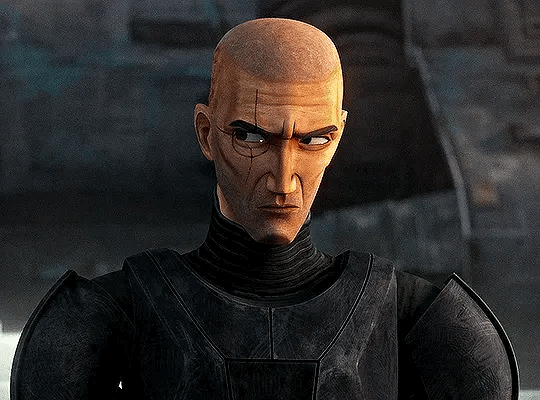
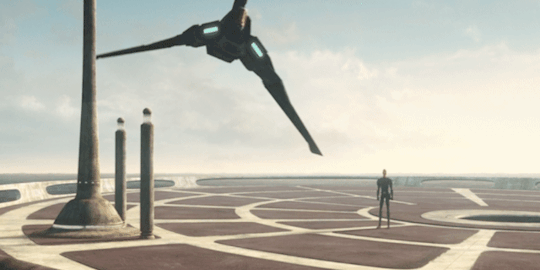
Despite feeling betrayed by the Bad Batch leaving him on Kamino, Crosshair still clings onto the hope that they can be brothers again. He proves his loyalty towards them by killing his Elite Squad Troopers. Then, he offers them to join the Empire as their chance of reconciliation. However, they refuse his offer, forcing Crosshair to face the reality that the separation has not changed their hearts. When Hunter offers Crosshair a chance to rejoin the Bad Batch, Crosshair refuses, claiming that he has made his decision. At this moment, Crosshair lets go of more than the Bad Batch. He also lets go of his hopes that they will change, and lets go of the role of victimized, vindictive Hera. By accepting this reality, Crosshair is able to grieve and move on with his life without the Bad Batch. He stops chasing after them and he lets go of any desire for revenge. Of course, Crosshair is still loyal to the Bad Batch, and this is proven when he lies in his report that they have perished in the bombardment of Tipoca City. He still wants to protect them, even going so far as to send Plan 88 to warn them to hide.
In “The Crossing”, Tech admits to Omega that he does miss Crosshair. When Tech reveals that Crosshair is now under the hands of Dr. Hemlock, Wrecker is surprised that Crosshair has turned against the Empire. Based on his voice, Wrecker is hopeful that Crosshair will come back to them. Tech then pushes the mission to rescue Crosshair because he is their brother, and they do not leave their own behind. Omega, Wrecker and Echo are supportive of the mission, which leads Hunter to give the approval. Their attempt to rescue Crosshair conveys the message that Crosshair is truly important to them.
Since the worship for the goddess Hera was done in a yearly cycle (Hera the Maiden in spring, Hera the Fulfilled One in summer and autumn, and Hera the Widow in winter), there is an archetypal possibility for a Hera person to complete the cycle and begin anew. A Hera person can emotionally “widow” themselves by leaving a relationship or marriage that is empty, abusive or smeared with infidelity. They can then start anew and choose wisely this time. Their drive to be a committed partner can once again be fulfilled in a positive manner as they find themselves in a new relationship or marriage.
Crosshair takes on the archetypal Hera the Widow when conflict arises between him and Hunter, and it gets worse when the Bad Batch leaves him on Kamino. In “Kamino Lost”, Crosshair chooses to emotionally “widow” himself by not returning to the Bad Batch that clearly does not trust him anymore. This is evident when Wrecker, Tech and Echo point their blasters at Crosshair because they think that he is going to shoot Hunter, when in fact, he is going to shoot a grapple to save Omega. Although Crosshair has made a horrible decision to stay with the Empire, he does come to his senses after meeting Commander Mayday. When Mayday is devastated to realize that the Empire disposes the clones despite their loyalty and sacrifices, Crosshair finally understands that loyalty goes two ways. Since this loyalty between the clones and the Empire is only one-sided, Crosshair turns against the Empire. I am sure that once Crosshair is back with the Bad Batch, he can start anew with them and make wiser decisions this time – like he “recycles” himself and takes on the archetypal Hera the Maiden.
Crosshair’s archetype combination is Poseidon, Apollo, Artemis and Hera. These archetypes are opposites to each other: Poseidon is emotional while Apollo is logical; Artemis is independent while Hera is dependent on others. This combination gives Crosshair a lot of complexity: he is both logical and emotional, is an independent spirit but also deeply cares for his loved ones. In Greek mythology, Apollo and Artemis are twins, and they are both archers, capable of aiming their goals from afar. Apollo is associated with civilizations while Artemis is associated with the wilderness. The Apollo-Artemis combination helps Crosshair to accomplish his goals with ease. He works well with social institutions and he has a love for the wilderness. Besides that, the Poseidon-Hera combination is also possible for it reflects the relationship between Poseidon and his wife Amphitrite. Since a Poseidon person is more in touch with their emotions, they may place high importance on their loved ones, especially if they take on the mature Poseidon that embrace their emotionality in a positive manner. With that, a loving Poseidon can satisfy their Hera partner greatly. The Poseidon-Hera combination makes Crosshair an extremely loyal and committed person. He takes great care of his loved ones and he is fiercely protective of them.
It is worth noting that there is one myth where Poseidon, Apollo, Hera and Athena tried to overthrow Zeus, but they failed. They were punished except for Athena because she was the favourite child of Zeus. This myth gives an insight to the relationship between Hunter (Zeus), Tech (Athena) and Crosshair (Poseidon, Apollo and Hera). When Tech decides not to follow Hunter’s orders, Hunter gets annoyed by it but he lets Tech do his own thing. This is evident in “Cut and Run” when Tech decides to get their ship impounded by the Imperials because this is the simplest solution to get the chain codes. Hunter is angry that Tech goes against his plan, but he trusts that Tech has everything under control. He only warns Tech that Omega is on the ship. On the other hand, when Crosshair decides not to follow Hunter’s orders, Hunter immediately shuts him down. This is evident in “Aftermath” when Crosshair keeps shooting at Caleb Dume despite Hunter repeatedly orders him to stand down. Hunter even questions Crosshair about his actions, wondering what is wrong with him. Moreover, in the Hyperspace Stories #10, Hunter probably senses Crosshair’s frustration with the mission they are given, and he mistakes it as Crosshair questioning orders, which is why he reminds Crosshair that they have their orders. All of these seems to indicate that Tech is Hunter’s favourite, and Crosshair is treated like “the middle child” of the Bad Batch. It is also worth noting that Poseidon, Artemis and Hera are all known for their destructive rage that does not spare innocents, and this reflects on Crosshair’s wrath. If you want to live, do not ever get on his bad side.
Despite all four of his archetypes being opposites of each other, they all prioritize on loyalty and commitment, which are Crosshair’s main values. Crosshair is extremely committed to his duty as a soldier, but he is also committed to his loved ones (probably more than his duty as a soldier). He is fiercely loyal to his loved ones, and will do anything to protect them from harm. If you can see through his cold façade, you will find a man who is willing to make tremendous sacrifices to keep you warm and safe. You just need to be patient with him and be kind to him. As long as you are on his good side, rest assured that you will have a valuable friend and partner in Crosshair.
#star wars#star wars the bad batch#the bad batch#tbb#sw the bad batch#sw tbb#the bad batch analysis#tbb analysis#the bad batch meta#tbb meta#star wars clone wars#star wars the clone wars#sw the clone wars#sw clone wars#the clone wars#clone wars#star wars tcw#sw tcw#the bad batch crosshair#tbb crosshair#crosshair bad batch#crosshair tbb#crosshair the bad batch#bad batch crosshair#clone force 99#archetypal psychology#archetypes#goddesses in everywoman
19 notes
·
View notes
Photo

Goddess Archetypes
Jennifer and Roger Woolger, The Goddess Within: A Guide to the Eternal Myths that Shape Women’s Lives
522 notes
·
View notes
Text
Artemis + 🐻
"The life cycle of bears and their behaviours and similarities with man were studied in ancient times by Aristotle, Theophrastus, and Pliny. However, archaeological evidence for the image of a bear as mother goes back to the Neolithic period. This Neolithic image portrays the 'notable tenderness of the mother beast for her cub as an image for human mothering.'
Baring and Cashford suggest that the bear is 'probably the oldest sacred animal of all.' These images are linked to the Brauron initiations into womanhood and motherhood, as well as the suggestion that Artemis is a derivative of an ancient bear goddess.
The authors note that the bear is 'the oldest animal hunted for food in the northern hemisphere, and also the oldest animal whose remains have been given a ritual significance.' This complex imagery of the bear as caregiver, but also as a large violent animal, is in many ways an anthropomorphic representation of the goddess herself.
Under her care, young women are protected in the transition from child to adult; however, there is also an animalistic character to this ritual. In order to be transformed from girl to woman, the young girl must shed the uninhibitedness of her childhood and offer it as sacrifice to Artemis.
This is a ritual of 'wildness.' When girls who were coming of age were seen as being especially 'hormonal', they were said to be in the grip of the wild, independent goddess herself. By performing these rituals, it was believed that the goddess would guide the girls to maturity.
During rites of initiation, young girls become the bears of Artemis. One example is the archeological find at Sparta, where an interesting lead figure from the sanctuary of Artemis shows a female dancer wearing a bear mask.
The ancient Greeks saw bears everywhere, especially in the stars, and attributed the characteristics of the mother bear to Artemis, both as the creature and as the stellar constellation of Ursa Major, 'the Great Bear'."
- She Who Hunts: Artemis: The Goddess Who Changed the World by Carla Ionescu
#artemis#artemis deity#goddess artemis#artemis devotion#artemis devotee#bear worship#bear archetype#hellenic polytheism#hellenic pantheon#hellenic gods#hellenic community#hellenic pagan#hellenic paganism#hellenic polytheist#hellenic worship
62 notes
·
View notes
Text

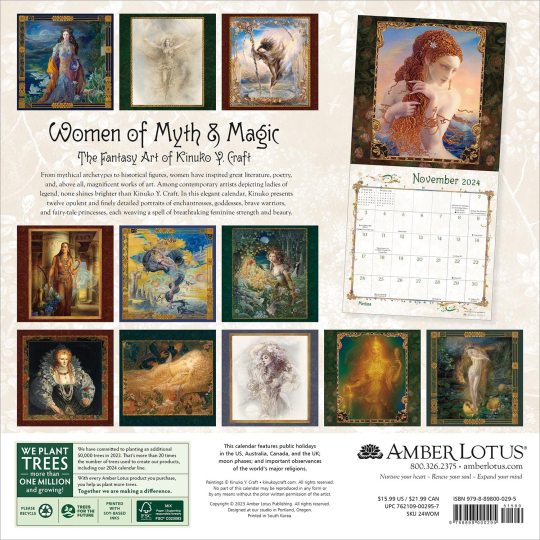
Women of Myth & Magic 2024 Fantasy Art
https://amzn.to/45Mwwv7
33 notes
·
View notes
Text
Mythic Symbolism in the Mayfair Witches
a mythic and psychoanalytical thread exploring themes of: alchemy, star lovers, fairytales, greek myth, three fold goddesses, and beastly grooms within the amc series ‘anne rice’s mayfair witches’
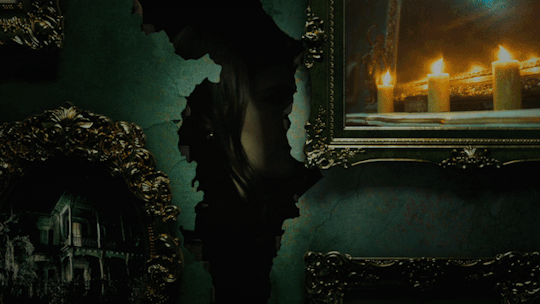
*disclaimer*
This post will be split up into multiple parts as it is very lengthy.
The point of this post is not to discuss how the show adapts the source material, but instead how the show stands on its own, utilizing psychological and mythic motifs in its plot and character journeys.
For those who want to see the show, it is available on physical DVD and Blue-Ray as well as streaming. The entire eight episode first season is available on AMC+ which you can get a free trial for through Prime Video channels.
A second season has also already been green-lit. However the first season ends on what I would consider a very satisfying note.
Part One, Part Two
——————————————————————���—
THE TRIPLE GODDESS: MAIDEN, MOTHER, CRONE
Aside from Rowan’s story, there are two other Mayfair women whose lives we follow. The progenitor Suzanne in the 17th century, and Rowan’s biological mother Deirdre. While together they each represent one of the goddesses, we also see each of them move through these roles in their own journeys.

The concept of the triple goddess also has strong roots in the myth of the Greek Fates and the Norns of Norse myth. Both represent the Birth/Life/Death cycle. This archetype is also strongly associated with Persephone, Demeter and Hecate, or Artemis, Selene, and Hecate.
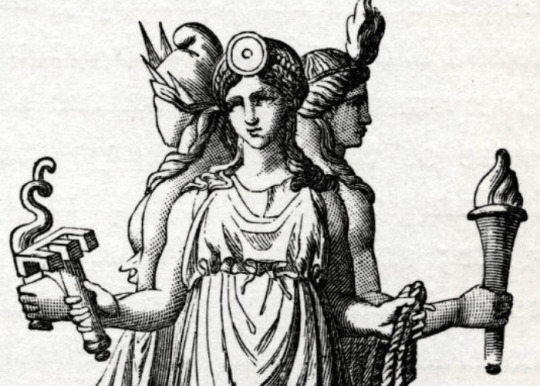
Each of these Mayfair women has a role directly associated with life and death. For example, Suzanne is a midwife whose work, like her aunt says, is not just curing people but also helping give them a good death.
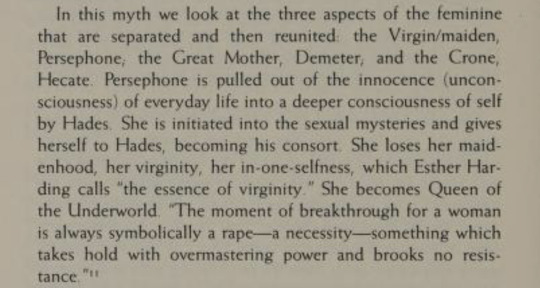
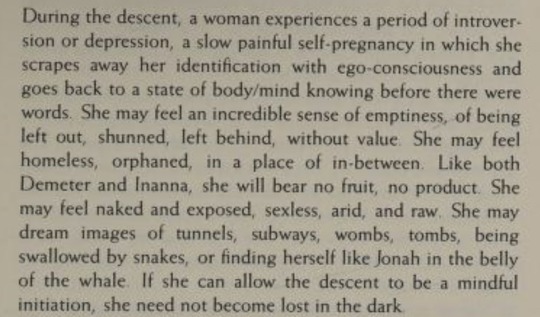
Rowan, like Persephone as Maureen Murdock puts it, is pulled out of the innocence of everyday life into a deeper consciousness of self by Hades. Or in this case Lasher.
Furthermore, Deirdre like Demeter is overcome with grief and surrenders to her sorrow, when her daughter is taken from her. However in this instance her daughter is taken away by Carlotta.

Suzanne is like Hecate as Jean Shinoda Bolen describes, a guiding companion force. When Rowan meets a crossroads in her journey at the Witching Hour, Suzanne is there to guide her as the first matriarch, as a mistress of life and death.
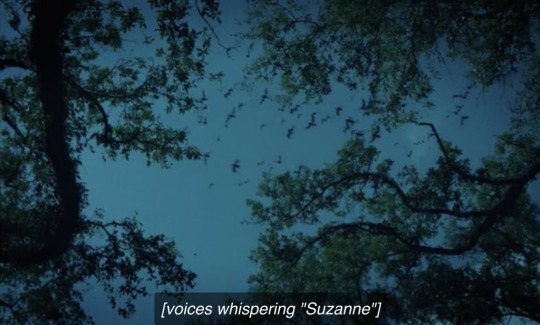
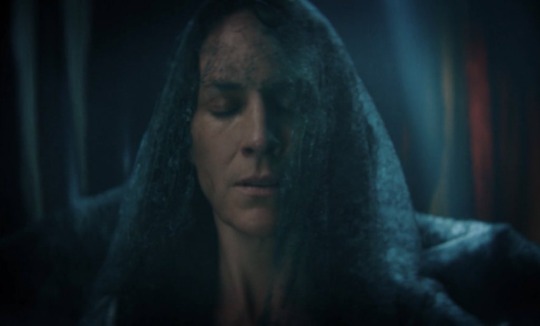
They each have mirroring moments in their journeys. Just like Rowan, Suzanne too was visited by a murder of crows, and the Dark Night of the Soul that Rowan is facing is likened in dialogue to the dark subconscious place Deirdre is trapped. In fact, episode two is titled The Dark Place.
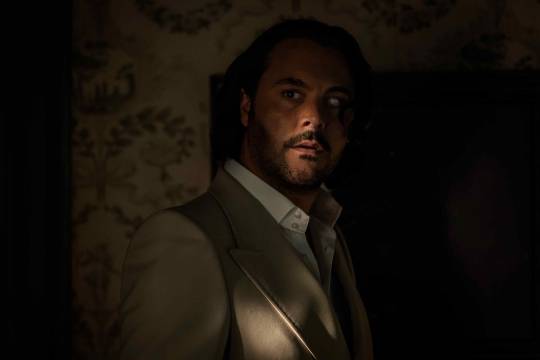

Each of them share the same animus. A being known as Lasher. He is bonded to each of the “Designees”, the matriarchs of the Mayfair family. We’ll delve into him soon enough.
DREAMS AND THE SUBCONSCIOUS
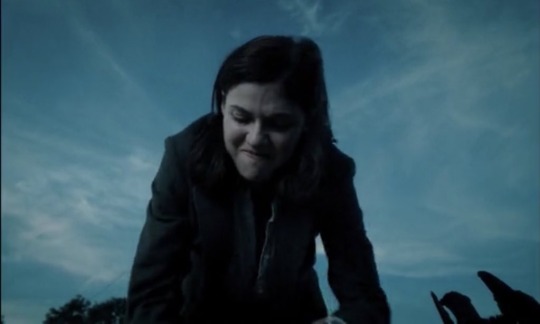
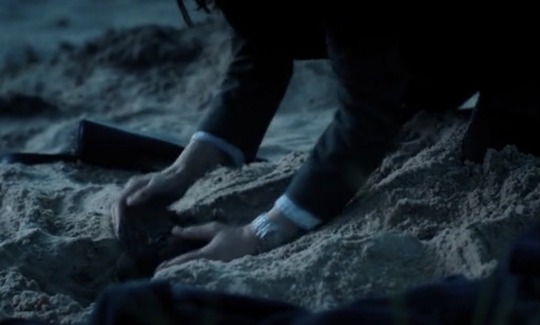
When Rowan uses her powers on the crows, causing a couple of them to fall down dead, she lays them down in her jacket, and drives off to a beach. She then walks to the shore and digs into the sand until she has a hole she can bury the crows in.
After this she takes a pill to force herself to sleep, both exhausted and desperate to flee into oblivion to escape her consciousness as it begins to recognize her shadow. But now as she is laying by the ocean, she is submerged in the unconscious.

She experiences a dream that evokes Cinderella, fairy godmothers, transformation, and spiritual death. She is wearing a shimmering blue gown, and is chasing after Ellie who is leading her somewhere. She runs after her mother, who leads her to The Mayfair House.
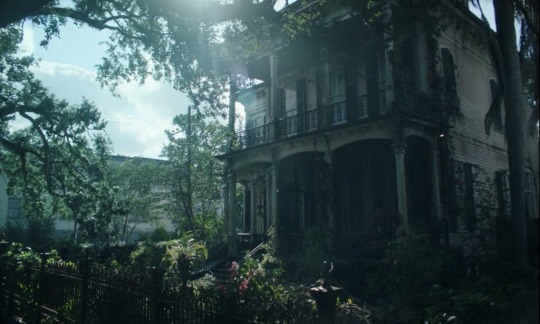
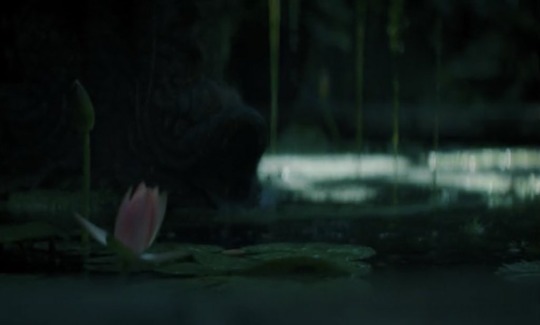
Whenever we see the house, it’s presented as a piece of nature itself, overgrown, hidden among trees, and the sound of water. It is a true representation of the subconscious, the underworld.
A FALSE START AND CLEANSING FIRE
When she finally goes to New Orleans, we think she’s going to get the answers she needs and reconnect with the feminine. However forces intervene and Rowan’s first impression of her Mayfair lineage and the power she possesses is one of fear, in part thanks to Ciprien Grieve. He means well, but his actions and perspective are a literal extension of Ellie as the “too good mother”.
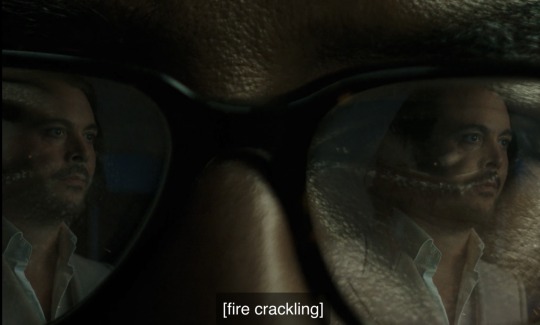
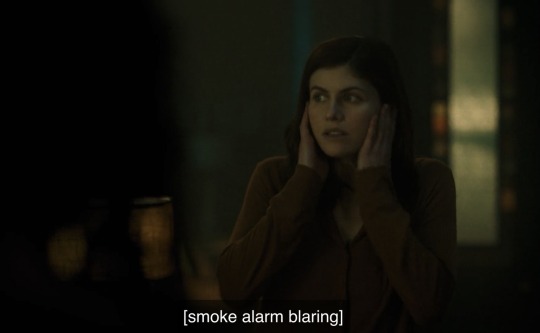
The organization called the Talamasca that Ciprien is part of, actually puts a spell around his building where Rowan is staying. Which acts as a wall or barrier keeping Rowan separated from her Shadow. It was made to keep Lasher out. This is when we have that cleansing flame, as Lasher sets a fire to get the alarms to go off and Rowan to leave the building.
And the first thing she intends to do, is find the Mayfair House which as we know is her subconscious…
End of Part Two
#heroines journey#alchemy#jung’s shadow#jungian archetypes#greek mythology#mythology#folklore#fairytales#mayfair witches#rowan mayfair#rowan x lasher#mythic romance#alchemical marriage#maureen murdock#anne rice#myth and legend#triple goddess#persephone#demeter#hecate#cinderella
20 notes
·
View notes
Text

8 notes
·
View notes
Text
nahida is quite literally a digital angel
#easy to forget when not actively playing the game but so much of her kit + design revolves around the digital#its a really cute approach to the archetypal goddess of nature/wisdom#genshin being historical fantasy meant they couldnt take her digitization very far but I see the vision#shes jsut a little thing and She is in your computer.#in another life she would have been a vocaloid#. to me
14 notes
·
View notes
Text
“Women who follow their own inclinations to become competitive swimmers, active feminists, scientists, statisticians, corporate executives, housekeepers, horsewomen, or who enter convents or ashrams exemplify virgin goddess qualities. In order to develop their talents and focus on pursuing what has personal value, virgin goddess women often avoid fulfilling traditional women's roles. How to do so—that is, how to be true to themselves and adapt to living in ‘a man's world’—is the challenge.
In mythology, each of the three virgin goddesses faced a similar challenge, and developed a different solution.
Artemis, Goddess of the Hunt, forsook the city, avoided contact with men, and spent her time in the wilderness with her band of nymphs. Her adaption mode was separation from men and their influence. This mode is analogous to that of contemporary women who join consciousness-raising groups and become feminists intent on defining themselves and their own priorities, or who work in women-run collectives and businesses that serve womens' needs. Artemis women are also represented by "rugged individualists," who go it alone and do what matters to them, without personal support or approval from men—or from other women, as well.
In contrast, Athena, Goddess of Wisdom, joined men as an equal or as a superior at what they did. She was the coolest head in battle and the best strategist. Her adaptation was identification with men—she became like one of them. Athena's way has been taken by many women who have joined the corporate world or who have succeeded at traditionally male occupations.
Finally, Hestia, Goddess of the Hearth, followed an introverted way of adapting by withdrawal from men. She withdrew inward, became anonymous in appearance, and was left alone. The woman who adopts this mode downplays her femininity so as not to attract unwanted male interest, avoids competitive situations, and lives quietly, as she values and tends the daily tasks or meditation that give her life meaning.”
-Jean Shinoda Bolen, Goddesses in Everywoman
48 notes
·
View notes
Text
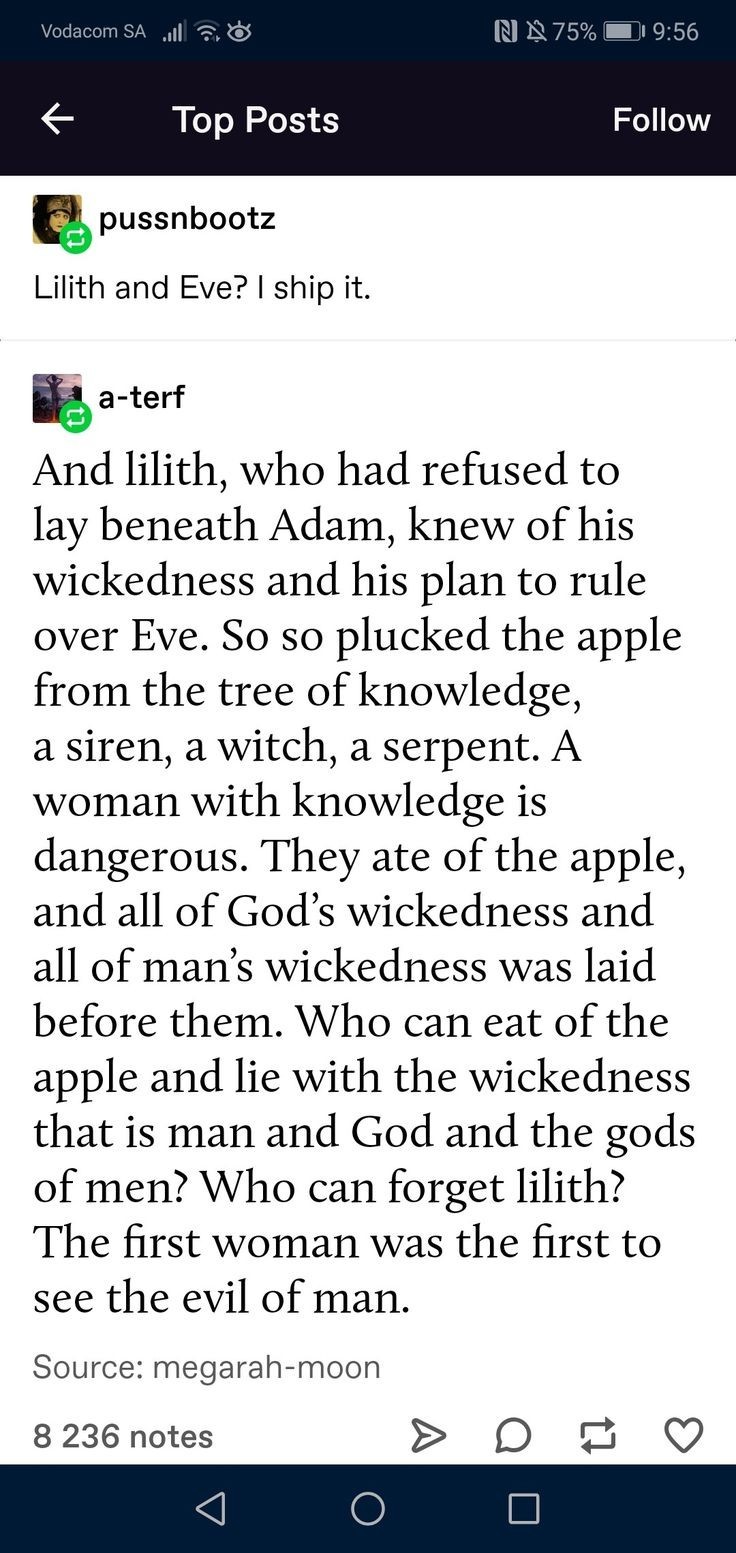


#LILITH Archetype#lilith#goddess LILITH#goddess energy#initiation#mother goddess#pluto placements#8th house#the great cosmic mother
39 notes
·
View notes
Text

source🌱
#feminine#feminine archetypes#dark femenine archetypes#wild woman#goddess#witch#medicine woman#woman#women
179 notes
·
View notes
Text
Why I believe Tech is alive
For this analysis, I will be referring to “Goddesses in Everywoman” and “Gods in Everyman” by Jean Shinoda Bolen. I will be talking about the Bad Batch Season 3 Celebration Europe trailer and the official Season 3 trailer. I will also refer to the titles of Season 3 episodes for this analysis. I will make some predictions for Season 3, so if you do not want to read into it, you can just scroll away.
We know the traumatising scene in “Plan 99” – Tech severs the connection between the cable cars and he falls. Hunter, Echo, Wrecker and Omega mourn for their fallen brother. However, many fans believe that Tech is alive, and he will return in season 3. I am one of those people. After watching the Season 2 finale, I mourn for the loss, but I also want to cling onto any possible hints that he is alive. With that, I delve deeper into archetypal psychology (while I was ill at that time), and I have discovered many interesting clues that make me believe that Tech is alive.
To the people who do not believe that Tech is alive and do not want him to return in Season 3 due to personal reasonings like finding meaning in death and dealing with grief, I understand and respect all your opinions. I just do not like the excuses of “we need more suffering” or “I like suffering” to “justify” why Tech should not come back in Season 3.
With that said, I am mainly using my understanding of archetypal psychology to explain why I believe Tech is alive. Some points have been discussed in my analysis of the 3 seasons, but I am going to expand these points here.

1. Voluntary descent into the Underworld
In the myths, most people descend into the Underworld involuntarily. This is done either through death or abduction. In psychological terms, people involuntarily descend into the Underworld when they go through a traumatic experience, or they lose meaning, hope or purpose in life. However, there are myths where people descend into the Underworld voluntarily.
Some heroes take on this journey with love as their motivation. In the myth of Eros and Psyche, Aphrodite ordered Psyche to enter the Underworld with a small box for Persephone to fill it with beauty ointment. This was Psyche’s fourth and final task that she must do if she wanted to reunite with her husband Eros. In the myth of Orpheus, he went to Hades seeking his dead wife Eurydice. In one myth of Dionysus, he entered the Underworld to resurrect his dead mother Semele. Besides love, some heroes are motivated by wisdom. In the myth of Odysseus, he ventured into the Underworld to seek help from a blind seer named Tiresias, so he could find his way home. In Roman mythology Aeneid, Aeneas entered the Underworld to seek the shade of his father, and he had a prophetic vision of Rome’s destiny. The journey to the Underworld is part of a heroic task. For example, in Greek mythology, the twelfth and final labour of Heracles was to capture and bring Cerberus, the three-headed dog that guards the gates of the Underworld. He was able to overpower the beast with his bare hands and bring it out of the Underworld, thus completing his twelve labours.
By enacting Plan 99, Tech voluntarily descends into the Underworld – and he is the only one to do so in Season 2. Meanwhile, the rest of the Bad Batch involuntarily descend into the Underworld through grief or abduction. Tech’s sacrifice is described as “heroic” and “intentional”, which are keywords for a voluntary descend into the Underworld. Besides, Tech is motivated by love and wisdom as he makes this descent. He wants to seek out information about the whereabouts of Crosshair and Omega, so they can finally reunite with Hunter, Wrecker and Echo.
However, voluntary descents are done at great risks for there is no guarantee of a safe return. As Tech voluntarily descends into the Underworld, his fate becomes uncertain, which will explain why ambiguous wordings are used to describe his fate: “he’s gone”, “he’s not coming back in this episode at least”, “sort of sacrifices himself”, “my life as a soldier has come to an end”, “it’s kind of a loss, it’s complicated (with averted eyes)”, “plummeted out of sight”, etc.
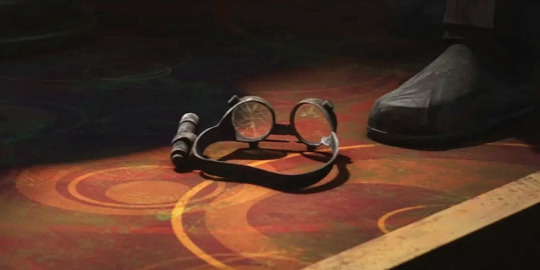
2. Broken goggles indicate dismemberment
As the Bad Batch mourns for their loss, Dr. Hemlock arrives to capture them. He throws a pair of Tech’s broken goggles to Hunter, saying that this is the only thing they could salvage from the wreckage. Judging from the state of the goggles, it seems that the goggles were smashed on impact and were later removed. Moreover, some fans see this as mirroring the last time we saw Echo after his apparent death in the Citadel, in which we saw Echo’s charred helmet being left behind.
The goggles have always been a part of Tech’s identity. He is the most recognizable for wearing it. Cid even gives him the nickname “Goggles”. Besides the goggles, his eyes also formed part of his identity. When Phee first meets Tech, she calls him “Brown Eyes”, hinting that she is drawn to his eyes despite all clones have brown eyes. Losing the goggles means that Tech has lost part of his identity, which is a form of psychological dismemberment. In Jungian psychology, anything that has been “dismembered” is thrown into the Underworld and it becomes part of our Shadow, which consists the parts we have deemed as unacceptable, shameful or even traumatic. I have seen fanarts about Tech being alive but he loses his sight, which can be considered as a form of physical and psychological dismemberment.
We have seen 3D models of Tech without his goggles, and he looks different from his usual look. When he wears the goggles, he looks friendly and approachable. Without the goggles, he looks serious and intimidating. We know that the goggles records everything, and in addition to giving Tech a friendly and approachable look, it enables him to get close to anyone and gather vital information. This is useful most of the time, especially during the Clone Wars as Tech acts as the bridge between Clone Force 99 and other people. However, this will become difficult during the rise of the Empire as the galaxy becomes more dangerous. A friendly look will likely draw unnecessary attention and people are more likely to pick on you. This may have been a problem for Tech in some mercenary jobs. For example, when Phee brings the Bad Batch to a cantina to purchase an artifact, Tech stays in the Marauder to provide them a getaway. I think Tech being assigned to this role is not just due to his piloting skills, but the fact that he looks “too friendly” to blend in with the crowd that mostly has questionable morals. Instead, Hunter and Wrecker are chosen as Phee’s muscle as they can blend in with the crowd so Lanse Crowder and his henchmen will let their guard down (as for Omega, she acts as Phee’s young apprentice).
If Tech needs to sneak in and acquire confidential Imperial files, an intimidating look will help. Without his goggles, Tech can easily take on the serious and intimidating look to blend it with the Imperials and/or scare off the low-level Imperials. This new look can also be useful for Tech to blend in with pirates, smugglers, mercenaries and bounty hunters – to show that he is someone you should not mess with.
I do believe that we may see Tech taking on a different look (and a different identity) in Season 3. I once imagined his new appearance to resemble a figure wearing black armour (quite similar to the one shown in the official Season 3 trailer). His different look may indicate that “the old friendly Tech is gone”, but this does not necessarily mean that Tech will be brainwashed by Hemlock and become a clone assassin. It will just mean that he has to suppress his friendly side in order to find Crosshair and Omega.

3. Tech’s archetype combination: Hades, Hermes and Athena
In my two-part character analysis of Tech (innate archetype and anima), I identify Tech to have three main archetypes: Hades (the God of the Underworld), Hermes (the Messenger God) and Athena (the Goddess of Wisdom).
Since Tech is innately Hades, this means that he is used to the Underworld as his exceptional mind already serves as his Underworld. Based on the footage shown in the Celebration Europe trailer and the official Season 3 trailer, I can see that each member of the Bad Batch is in their own versions of the Underworld: Hunter is loss of purpose, Echo is loneliness, Wrecker is monsters, Omega is abduction, and Crosshair is hopelessness. This leaves me a question: what is Tech’s Underworld? The answer is… I do not really know. His mind already resembles the Underworld and he can easily spend long hours by himself – as if he is familiar with this dark and mysterious territory. If you try to subject Tech with the Underworlds experienced by other members of the Bad Batch, he will most probably be unaffected by it. He is probably aware of these aspects of the Underworld, and he is not afraid to face them. Since the writers intended to bring the Bad Batch into the Underworld and keep them there for some time by the Season 2 finale, it would explain why they had to take Tech out of the picture. Tech would have made their journeys to the Underworld at least bearable and he would have brought them out of their dark places quickly. Without Tech, the Bad Batch would have to struggle for months (since there is a time jump hinted in the trailers). Moreover, Tech’s disappearance resembles Hades wearing the cap of invisibility – Tech has become Hades the Unseen One, “invisible” to everyone.
As Athena, Tech is a powerful strategist that gears towards practicality and pragmatism, which enables him to get an upper hand over his enemies. His craftiness and emotional distance can lead him to “do whatever it works” to accomplish his goals or defeat his enemies. With this in mind, I believe that Tech already has a strategy in mind when he decides to enact Plan 99. Although he is well-aware that his action will hurt his teammates, he does it because “it is the only way” he can succeed in his mission of finding Crosshair (and later Omega). In Greek mythology, Athena is the ally and guide of many heroes. When Heracles is tasked to capture Cerberus, Athena and Hermes act as his guides to the Underworld, helping him to complete his final labour. In orphic theology, Athena is depicted as a rescuer of Dionysus, the God of Wine and Ecstasy. In this myth, she managed to save the heart of the infant Dionysus that had been torn into pieces. She then gave the heart to Zeus, who sewed it to his own thigh, allowing Dionysus to be reborn. By taking these two myths into consideration, Tech takes on the guide and rescuer of the Bad Batch, who are heroes.
Among his archetypes, I find that Hermes is the strongest in Tech. As the messenger, Tech can easily travel through different places to gather information, just like Hermes who can swiftly travel between Olympus, earth and the Underworld. As the trickster, Tech can sneak around, make an escape, steal data, hack into machinery and break through confidential files with ease. As the alchemist, Tech can create new things and strategies to help him and his teammates.
Hermes is known to be the guide of souls and the rescuer of the child. As a psychopomp, he accompanies the souls of the dead to the Underworld (psychologically, he is the archetype that helps people during significant life transitions). In his myths, Hermes has rescued Ares who was trapped in the bronze jar, has brought Persephone out of the Underworld, and has saved Dionysus at least twice. These two roles have been present in Tech since his first appearance. It is highly likely that these roles would become more prominent in Season 3. I believe that Tech would lead Hunter, Echo and Wrecker to rescue Crosshair and Omega. Once the team is reunited, Tech would become the guide of souls as he helps the Bad Batch (and himself) to find meaning in their sufferings, to integrate all aspects of themselves, and to be transformed by their journeys to the Underworld: Hunter would learn to embrace human seasonal changes and become a hero; Echo would learn to become more assertive and be unafraid to revisit his trauma; Wrecker would learn to think before he acts; Crosshair would learn to be vulnerable and let love be his motivator; Omega would become more mature and assertive as she guides others through dark times; and Tech would learn to be more in touch with his emotions.
According to Jean Shinoda Bolen, Hermes has the innate potential to become a guide of souls and a seeker of meaning. This potential can be unleashed by venturing down into the depths of the Underworld, which will lead a person to undergo a spiritual evolution. They will gain valuable insight from this journey and will return to pass down what they have learned. This is similar to Hermes bringing Persephone (the soul) out of the Underworld and back to her mother Demeter. This myth became the basis for the Eleusinian Mysteries, which was the most sacred and important religious rituals of Ancient Greece that celebrated the return of Persephone from the Underworld. The ancients believed that those who were initiated into the mysteries would gain a reason to live in joy and die without fearing death.
In Season 1, Tech is more focused on monetary gains to support the Bad Batch after they defect from the Empire. They start to work for Cid by taking up mercenary jobs. For example, in “Rampage”, the Bad Batch is tasked to rescue Muchi from Zygerrian slave traders, which is the right thing to do, and according to Tech, they can earn a decent amount of credits. In “War-Mantle”, when the team discusses whether they should deviate from their job and rescue Gregor, Tech reminds them that Cid will not compensate them if they choose to deviate, and they will go hungry without the money to buy food.
I believe Season 2 is when Tech starts to undergo a spiritual evolution. In “Spoils of War”, the Bad Batch agrees to Cid’s promise to free them from their debts if they succeed in retrieving one of Count Dooku’s war chests. Although Tech’s left femur is fractured during the mission, he is determined to retrieve the war chest and use the fortune for the team’s benefit. However, I believe Tech’s meeting with Romar is what changes him, which initiates his spiritual evolution. Romar has survived the bombardment of Serenno City, and he now lives in the woods alone. He is not interested in Dooku’s war chests, and instead, he is more interested in persevering his Serennian culture, which gives him meaning in life. When Tech manages to fix the datacore and restore data about Serennian culture, Romar is overjoyed because his life now has meaning once more – as if his soul is rescued from the Underworld. This may have initiated him into the Eleusinian Mysteries, giving him the reason to continue living in joy and gaining the bravery to help Tech and Echo to find Omega before the Imperials do. Before the Bad Batch leaves, Romar tells Tech that he is staying behind as he is a survivor, which seems to have impacted Tech. I believe that Romar has acted as a wise elder that sends Tech on the spiritual journey, making him realize that helping others is more meaningful than carrying out mercenary jobs to make ends meet. Even though Tech gains nothing from helping Romar, he finds it meaningful.

However, Tech is not as vocal as Echo because of his loyalty to Hunter (motivated by his Athena anima). Hunter wants the team to lay low and not get involved in the fight against the Empire. Tech knows Hunter has the team’s best interest in mind, so he does not object. Though, it is possible that Tech is starting to become frustrated. In “Faster”, Tech complains to Cid that giving Hunter and Echo the job to deliver 50 cases of nerf nuggets is a waste of their skills and talents. He also does not want to follow Cid for another mission, but he goes for it because of Wrecker and Omega. When they must win the race to free Cid and her debt to Millegi, Tech reminds Wrecker and Omega that Cid’s dealings with individuals of questionable integrity have caused her to repeatedly use the Bad Batch to solve her problems, which has become a problematic pattern. It does seem that Tech is starting to get tired of Cid and he begins to find this current life as meaningless. He probably wants more of this life but he cannot.
After Echo leaves the Bad Batch, Tech turns all of his energy to work, which is his way of dealing with the loss. I also believe that Tech becomes intensely focused on work because he is determined to fully pay off the team’s debt so they can be free and do whatever they want in life. Since Echo leaves to join Rex’s resistance network, which gives him meaning in life, Tech may have become more motivated to achieve that goal for the Bad Batch (and himself). However, by focusing intensely on work, Tech has become emotionally withdrawn, which leads to tensions and misunderstandings. In “The Crossing”, Omega thinks that Tech is unbothered by Echo’s absence and that he is unsympathetic towards her grief. When Tech realizes that his intense emotional withdrawal has inadvertently hurt his loved ones, he learns to understand himself better and learns to grow.
In “Retrieval”, the Bad Batch goes to retrieve the stolen Marauder in Mokko’s factory. Tech points out that Mokko appears to be using his power and means as a leverage over his workers, which consist of adolescent miners. He finds Mokko’s operation to be similar to the Empire. After the Bad Batch manages to free the miners from Mokko’s oppressive rule, Omega realizes that there are other threats besides the Empire. Tech reassures her that there are many good people out there like them. Their actions of liberating the miners have helped them to reconnect with their souls – they once again find what gives them meaning in life.



Since Cid refuses to help the Bad Batch after they lost the Marauder during the mission to acquire ipsium, the team begins to keep a distance from her. They probably begin to feel that Cid is taking advantage of them and she would never release them from their debts. In “Metamorphosis”, when Cid provides intel about a downed ship that they can scavenge for parts, the team demands a higher share of the cut and threatens to not return. Tech knows that their agreement with Cid is not mutually beneficial, but they cannot sever ties so easily because Cid knows compromising information about them. Hence, Tech proposes to treat this mission as their last for Cid – which means they are going for a strike. Perhaps Tech hopes that the strike can teach Cid a lesson, and it can give the Bad Batch alternative options to earn credits like working with Phee.
It does seem that all goes well once the Bad Batch teams up with Phee – they are taking on more meaningful jobs (which involve retrieving artifacts that are mostly culturally significant to the people on Pabu), and they now have the option to stay permanently on Pabu. However, in “Tipping Point”, Tech realizes that Crosshair is being held captive by Dr. Hemlock and that Crosshair has sent Plan 88 to warn them that they have been targeted by the Empire. Tech now probably realizes the severity of the situation faced by the Bad Batch. He is probably well-prepared for the possibility that he has to carry out Plan 99 if anything goes wrong. Surprisingly, Plan 88 is called “The Seeker”, which makes me believe that this serves as an initiation for Tech to become Hermes the Seeker of Meaning. After all, Tech is now motivated to seek out Hemlock and his base in order to find Crosshair.
When the mission to Eriadu goes horribly wrong, Tech realizes that he must venture down into the Underworld (the Empire) so he can seek access to the mysteries hidden in the forbidden depths of the Empire (since the location and purpose of the Advanced Science Division led by Hemlock are hidden). With that, Tech carries out Plan 99, which is equivalent to him being initiated into the Eleusinian Mysteries as he “no longer fears death”. Before Heracles descended into the Underworld to capture Cerberus as his twelfth and final labour, he was initiated into the Eleusinian Mysteries to ensure that he would be able to safely return. He was also accompanied by Hermes and Athena on his journey. Since Tech is innately Hades, he is no stranger to the depths of the Underworld. Moreover, his Hermes and Athena archetypes are powerful enough to act as his guides to the Underworld. With that, it is highly possible that Tech survives the fall as he undergoes a full spiritual evolution, and he would return wiser than ever in Season 3.


4. The Abduction of Persephone: Hecate, Helios and Hermes
In the Greek myth, Persephone was kidnapped by Hades with the approval given by her father Zeus. Her mother Demeter heard echoes of her cries and rushed to find her. Demeter spent 9 days and 9 nights searching for Persephone across the earth (Coincidentally, 9 days and 9 nights can sound like 99 – Clone Force 99, Plan 99). At dawn on the tenth day, Demeter met Hecate, the Goddess of the Dark Moon, Crossroads, Witchcraft and Ghosts. Hecate told Demeter that she had heard Persephone screaming for help but did not know what happened to her. She suggested that they both go to Helios, the God of the Sun who shared this title with Apollo. Helios, who had witnessed the incident, told Demeter what had happened. Feeling betrayed and grief-stricken, Demeter ceased functioning as the Goddess of Grain, plunging the earth into an eternal winter that threatened to wipe out the human race. No gifts or honours could appease Demeter as she made it clear that she would not allow anything to grow until Persephone was returned to her. Zeus finally gave in and sent Hermes to bring Persephone out of the Underworld and restored her to Demeter. After the mother and daughter reunited, Demeter restored fertility and growth to the earth.
At the end of “Metamorphosis”, Lama Su (Zeus) tells Dr. Hemlock (Hades) that he needs to capture Omega (Persephone) if he wants to control Nala Se (Demeter – though not as strong as Hunter) and force her to carry out a project for the Empire. At the end of “Plan 99”, Hemlock successfully kidnaps Omega, and Hunter (Demeter) is too late to stop him. Despite not knowing where Omega is taken to, Hunter is determined to get her back and he will not stop searching for her. Since the trailers show Omega’s hair has grown longer to resemble Emerie’s hairstyle, and that Hunter’s hair has also grown slightly longer, this means that Hunter has sent months searching for Omega. His armour becoming more worn out with colours fading away indicates that he has not stopped to rest in his frantic search for he does not want Omega to wait for another day – like Demeter did not eat, sleep or bathe as she searched for Persephone.
In the Celebration Europe trailer, Rex tells Hunter “That kid (referring to Omega) may be the key to whatever is happening on Mount Tantiss”. I believe this scene is from “A Different Approach”. We know that anything about Mount Tantiss and its experiments are confidential. When the ships heading to Mount Tantiss encounter problems such as extensive damage of the ship or hijacking, the Imperials will erase the databanks to prevent anyone from discovering the destination and the purposes of the experiments. The Imperials will also commit suicide, taking all confidential information to their graves. The databanks are also heavily encrypted, which provides extra protection for anyone who manages to retrieve them before deletion.
Based on Rex’s sentence, it seems that someone has provided him the information about Mount Tantiss and the experiments being conducted there. However, Rex only suspects that Omega may be related to the experiments on Mount Tantiss – which means they are still uncertain about her precise location (even though the audience knows that she is there). So, who could have sent such confidential information to Rex? I do not think it is Scorch or Emerie because if it was either one of them, they would have confirmed that Omega is on Mount Tantiss. Perhaps it could be one of the undercover clones working for Rex’s resistance network? It is possible, but any information about the Advanced Science Division (Hemlock, Mount Tantiss, cloning experiments, clone prisoners) are heavily encrypted and Hemlock is certain that nobody can break through these safeguards. However, there is one person proven to have the capability to do so – Tech.
I believe that Tech would take on the roles of Hecate, Helios and Hermes. As the Goddess and Protector of the entranceways, Hecate was worshipped in ancient Athens as a protector of the household, alongside Zeus, Hestia, Hermes and Apollo. In Hesiod’s Theogony, she was depicted as a goddess of great honour with domains in sky, earth and sea. By the fifth century BCE, she has taken on a darker depiction as the Goddess of Witchcraft, Ghosts and the Dark Moon. Some sources represented her as the guardian of the gates to the Underworld, or as the keeper of keys to the Underworld. As the Goddess of the Crossroads, she took the form of a triple-goddess or a triple-faced goddess. Due to her association with being ‘between’, she is depicted as a “liminal” goddess that has the ability to cross from the Underworld to the physical world with ease. She also acted as a mediator between the Olympians and Titans, and between the mortals and the divine. Her liminal role is reflected in a number of her cult titles: Apotropaia (that turns away or protects); Enodia (on the way); Propulaia/Propylaia (before the gate); Triodia/Trioditis (who frequents crossroads); Klêidouchos (holding the keys).
Tech may have taken the role of Hecate when he finds out that Crosshair is being held captive by Hemlock but he does not know where Crosshair is. This sends him on a journey to find him. It is possible that Tech would have come to know that Omega has been kidnapped by Hemlock. This would push him further to locate them. Like Hecate, Tech would stand on the crossroads between the Empire, the pirates and smugglers, and Rex’s resistance network. He would sneak into the Empire (the Underworld) to find any information regarding Hemlock and the Advanced Science Division, and then he would send that information to Rex, who would later inform Hunter about it. I believe that Tech found out information regarding Mount Tantiss and the cloning experiments being carried out there. He would have related this information to the Bad Batch’s discovery of a downed ship in “Metamorphosis”, in which the ship contained Kaminoan technology and a cloned Zillo Beast, which was later captured by the Empire. This discovery led Tech to theorize that the Empire destroyed the cities of Kamino to take control of its cloning technology for nefarious purposes. With that in mind, Tech would suspect that Hemlock is associated with these cloning experiments on Mount Tantiss, and that Crosshair and Omega are being held captive there. This information would give Hunter, Wrecker and Echo a different approach to find Crosshair and Omega.
Of course, suspicion would not be enough for Tech. He would need confirmation that Crosshair and Omega are on Mount Tantiss. He would also need the layout and floor plan of Mount Tantiss so he could precisely locate where Crosshair and Omega would be held captive. By studying the security measures of Mount Tantiss, Tech would be able to find the best infiltration point, devise the best method of escaping, and prepare for any traps that could hinder the rescue mission like the poisonous gas created by Hemlock in “Tipping Point”. He might gain this information through confidential databases or through a secret communication with Emerie and/or Scorch (though Emerie might be more likely). I believe “The Return” is when Tech reveals to the Bad Batch that he is alive. This time, Tech would take on the role of Helios as he could definitely confirm that Crosshair and Omega are on Mount Tantiss. He would provide the layout and floor plan of Mount Tantiss, allowing Hunter, Wrecker and Echo to plan out a rescue mission. I believe that “Infiltration” and “Extraction” would be the rescue mission, and Tech would take on the role of Hermes, or more specifically, as the guide of souls and the rescuer of the child. Tech would lead Hunter, Wrecker and Echo to infiltrate Mount Tantiss, and they would successfully rescue Crosshair and Omega.
When I analyse the Bad Batch arc in the Clone Wars, I discover that Tech has taken on the roles of Hecate, Helios and Hermes. In “The Bad Batch”, the Bad Batch, Rex and Jesse manage to infiltrate the Cyber Center on Anaxes, which the Separatists are using it to receive Rex’s battle strategy algorithm to predict the Republic’s tactics. When Tech hacks into the computer system, he discovers that the algorithm is not stored inside the center’s memory banks. Instead, the algorithm is being broadcasted from another planet called Skako Minor. This discovery is shocking to both Tech and Rex. Right here, Tech has taken on the role of Hecate as he is now at the crossroads between Anaxes and Skako Minor, and he is providing Rex a different approach to stop the Separatists from winning. Tech then takes on the role of Helios as he digs deeper and finds an audio signal that sounds like a human voice. Under Rex’s request, Tech sends a transmission requesting the person’s identity, which turns out to be “CT-1409” – Echo’s identification number. Tech also drops the voice’s masking so they can clearly hear that it is the voice of a clone trooper.
In “A Distant Echo” and “On the Wings of Keeradaks”, Tech takes on the role of Hermes. As the guide of souls, Tech brings the Bad Batch, Rex and Anakin to Skako Minor, which serves as the Underworld to Echo (and Rex). He flies into a storm but manages to safely land on the planet’s surface. When Anakin is captured by a keeradak, Tech gives the coordinates so Crosshair can shoot a grappling hook at the flying reptile, which allows Hunter to use it to track down Anakin. After rescuing Anakin from the Poletecs, Tech becomes the translator (or Hermes the god of speech) that helps the team and the Poletecs to understand each other. When Tech loses Echo’s signal, Hunter, Wrecker, Crosshair and Anakin begin to fear that Echo is actually dead and the Separatists are using him to lure them into a trap. However, Tech does not believe in that, and neither does Rex. This can be interpreted as Tech helping Rex to hold onto hope. After Tech and Rex manage to find Echo in a stasis chamber, Tech uses his expertise to safely disconnect Echo from the computer. Then, as droids begin to surround Anakin and the clones on a long narrow pipe, Tech uses a recording to summon several keeradaks, allowing all of them to escape using an alternate route. Thanks to his powerful Hermes archetype, Tech ensures that the rescue mission will be a success. As Hermes the rescuer of the child, he plays a vital role on rescuing Echo, who has the Persephone anima. I believe that he would do it again for Omega and Crosshair.

5. Tech vs Hemlock
Tech and Hemlock share the same archetype combination, but they take on different sides. Tech is the good Hades as he is willing to share his inner riches to others (as Hades the Plouton) and he is able to understand and respect other people’s decisions and subjective values (as Hades the Good Counsellor). Hemlock is the evil Hades as he takes on the archetype of the abductor and the shadow of the father archetype (or the Shadow of Zeus). The Empire and Palpatine, with all their might, power and control, represent Zeus. Imperials like Tarkin and Hemlock take on the Zeus archetype as they are prominent figures of the Empire (even having a meeting on the Summit, which is where Zeus resides on his throne). The Empire announces that the clone troopers will be sent for retirement, but they are acting out a terrible secret in the shadows. Hemlock represents the Shadow as he is the one requesting the Empire to send him dissident clone troopers for his inhumane experiments as he believes that eliminating them will not root out the problem of rogue clones within the Empire. Hemlock is abducting these clone troopers into Mount Tantiss, which is the Underworld. He even abducts Omega, who is innately Persephone, so he can force Nala Se to carry out an important project for the Empire. He even threatens to torture Omega for Nala Se’s defiance and failures.
Tech is the good Hermes as he is the guide of souls, the seeker of meaning, and the rescuer of the child. On the other hand, Hemlock is the sociopathic Hermes as he takes on the negative side of the trickster. This is evident when Hemlock pretends to be Hermes the rescuer of the child as he tells Omega that he is here to return her to Nala Se (like Hermes restoring Persephone to her mother Demeter). Although he is right to some extent, Omega does not want to go back to Nala Se because she does not want to be separated from her brothers, and she does not want to be turned into an experiment by the Kaminoans. Hemlock is aware of her resistance, so he resorts to kidnap her. Hemlock does restore Omega to Nala Se, but he actually traps both of them in the Underworld, preventing them from escaping and forcing them to do whatever he wants from them.
In the trailers, we see Hemlock walking beside Palpatine as he commences a project for Nala Se. It does seem that Hemlock has become Palpatine’s right-hand man, making him Athena the archetype of “the father’s daughter”. He upholds all of Palpatine’s commands no matter how horrible they are. Tech has this Athena archetype on him as he is loyal to Hunter, but he also has a tendency to deviate from Hunter’s orders when he thinks it is necessary. Besides, Hunter being a good leader also influences Tech to take on more positive traits of Athena.
Hemlock seems to know how to psychologically break the Bad Batch: he tortures Crosshair with an interrogation droid; he throws Tech’s broken goggles to Hunter and points out his failed leadership; he imprisons, restrains and tortures Omega until she starts to lose hope. Since Tech and Hemlock represent the opposite sides of their archetypes (good vs evil), I feel that Tech is the best candidate to take down Hemlock.

6. Tech’s wrath
I have seen headcanons describing Tech’s wrath as the scariest, and I agree. Although Tech is calm and collected, there are times we can see Tech holding back his anger and frustration. His exceptional mind is one factor why you should never hurt Tech or his loved ones, but I believe there is another factor – his Hades archetype.
In one Greek myth, Theseus and Pirithous both wanted to marry a daughter of Zeus. Theseus chose Helen of Troy while Pirithous chose Persephone (despite she was already married to Hades). They both enter the Underworld and become trapped there. One version of the myth stated that they sat on the rocks and snakes coiled around their legs, which turned their bottoms and legs into stone. Another version stated that Hades had prepared a feast and invited them to sit, and they unknowingly sat in chairs of forgetfulness and were ensnared by chains or snakes. Heracles later encountered them when he was on a quest to capture Cerberus. Heracles managed to release Theseus, though some of his thigh and bottom are left attached to the rock or chair. However, the earth shook when Heracles tried to free Pirithous, serving as a sign that he was doomed to stay behind because his desire to have the goddess for himself was extremely insulting. Taking this myth as reference, I feel that Tech would psychologically torture anyone who dares to hurt him or his loved ones – giving them trauma and possibly ruining their entire lives.
We know that Tech is very protective of his loved ones. In “Aftermath”, when a clone shock trooper whacks Hunter in the stomach with a blaster, Wrecker and Tech are angry and ready to square off with the shock trooper. I believe that Tech loses his cool when he is unable to prevent a regular clone trooper from knocking Echo out with a tray. He may have become violent, causing Hunter, Wrecker, Crosshair and Omega to stop the food fight, restrain Tech, and bring the unconscious Echo to the medbay. I do believe that the Bad Batch knows that it is the end of the world when Tech loses his temper.
I believe that Tech would play a vital role in rescuing Crosshair and Omega from Mount Tantiss. I suspect that this would happen in the mid-season 3 episodes, which are “Infiltration” and “Extraction”. This rescue mission could be interpreted as Tech’s wrath was upon Hemlock. Once the Empire realized that the Bad Batch managed to infiltrate Mount Tantiss and break out two clone prisoners, this would indicate that the security and confidentiality of the Weyland facility had been severely compromised. Hemlock would lose his job, high status, respect and reputation. He would also lose funding and support for his experiments. If Emerie Karr did secretly help Omega and Crosshair to escape, it would rub salt into Hemlock’s wound because she was his assistant and he trusted her. This rescue mission would ruin Hemlock’s life forever, stripping away his purpose and meaning in his life – as if Tech had dragged him into the Underworld and chained him there as punishment.


7. Tech already knew Plan 99 has to happen
This is my theory of what happened to Tech: he uses Plan 99 to fake his death and uses Hemlock’s overconfidence to his advantage.
As the Messenger God, Hermes can travel across the sky, earth and the Underworld with ease. As an archetype, he helps a person to be aware of the past, present and future (the sky is associated with the present and future; the earth is associated with the past and present; the Underworld is timeless). Since Tech has a strong Hermes, he is able to make connections with the past and present to predict the future, which makes him an excellent strategist.
In “Tipping Point”, Echo seeks Tech’s help in decrypting data from a file aboard an Imperial ship carrying clone prisoners. After Tech manages to decrypt the data, he discovers that the Imperial ship was assigned to the Advanced Science Division, but there are no records of its location and purpose. He also discovers that the Advanced Science Division is headed by Dr. Hemlock, who has been expelled from the Republic Science Corps for his unauthorized and unorthodox experiments. Although Tech does not understand why clone prisoners are sent to Hemlock, but he is shocked to find that Crosshair is one of them, which indicates that Crosshair has turned against the Empire. Tech also checks all comm channels and finds a recent distress signal from Crosshair’s old code, which states “Plan 88 – the Seeker”. Tech believes that Crosshair is warning the Bad Batch that they have been targeted by the Empire, or more specifically, Hemlock.
Since clone prisoners are being sent to Hemlock, Tech probably believes that the Advanced Science Division is carrying out cloning experiments like cloning the Zillo Beast as they have discovered it in “Metamorphosis”. The Empire is now replacing Clone Troopers with Stormtroopers, so why would Hemlock need clones for? Tech would suspect that it has something to do with Clone X, a clone trooper with his identifying markings removed and is brainwashed to become an assassin. If that is the case, why would Hemlock be targeting the Bad Batch? Tech would suspect that Hemlock is after Omega because she has the unaltered genetic template of Jango Fett, which is why a bounty is placed on her head in Season 1. He may think that Hemlock wants the genetic template for his cloning experiments.
Moreover, previous records of clone prisoners reveal that Crosshair has been sent to Hemlock a few rotations ago. Then, the Plan 88 signal is sent recently, possibly from Hemlock’s base. Tech would suspect that Crosshair has heard that Hemlock is after the Bad Batch (especially Omega) and he manages to send them a warning. This would mean that their attempts to lay low have been futile. It is possible that their missions to Serenno, Coruscant and the downed ship with the Zillo Beast have caught the Empire’s attention. To make matters worse, they have left AZI with Cid, and AZI is a Kaminoan medical droid, which will attract Hemlock’s attention. Since they have crossed Cid by refusing to work for her, it is only a matter of time before she sells them out to Hemlock. It would be dangerous for them to step foot on Ord Mantell or to carry out any mercenary jobs because the Empire is now after them.
Since Hemlock is a high ranked Imperial, his base of operations would have tight security, and Tech may find it surprising that Crosshair managed to send the Plan 88 signal to them. Tech probably begins to wonder if Crosshair’s actions would serve as proof to Hemlock that the Bad Batch is alive, and he is now waiting for them to come and rescue Crosshair. This would serve as a trap as Hunter has suspected. Although Tech is determined to rescue Crosshair, they would have to do it in secret. Echo reports that Hemlock will be on Eriadu, and they can plant a tracking device on his shuttle so they can locate his base and Crosshair. It is a risky plan, especially with the knowledge that the Empire is targeting them, so everything must go smoothly. At this moment, Tech is probably preparing for the worst-case scenario. If the plan goes wrong, their position would be compromised, and Hemlock would suspect that they are involved in this because they have received Crosshair’s distress signal. Hemlock would have known about Clone Force 99 by now, and he would tighten all security measures, which would make it more difficult for them to locate and rescue Crosshair. Furthermore, a failed mission may result in all of them getting captured by the Empire, which is not an ideal outcome. With that, Tech is well-prepared to carry out Plan 99 if the mission goes wrong.
Surely enough, the mission does go wrong and Tech carries out Plan 99. Being the smartest one in the team, he would find a way to survive the fall. He also left his broken goggles at the wreckage to make Hemlock assume that he is dead and the Bad Batch did come back to retrieve his body (but they forgot the goggles). After all, clones do not leave their own kind behind. As the cable car speeds up and carries Hunter, Echo, Wrecker and Omega away, Tech probably would have predicted that Omega would get injured because she is not wearing any armour. This would prompt the team to bring her to Ord Mantell because AZI would know how to save her life. They would not have the time to search for Tech. Besides, with Hunter’s pessimism, he would assume that Tech did not make it, and as the leader, he would convince others that Tech is dead.
Now that the team is back in Ord Mantell, Tech would have predicted Cid’s betrayal. He also would have predicted Omega being kidnapped by Hemlock, which would force Hunter to join Rex’s resistance network for he needs all their help to rescue her. As Hemlock sees the grief on the team’s faces, he is convinced that Tech is dead. With the smartest team member ‘dead’, Hemlock thinks that he has won, and he is now unstoppable. He now has Omega, and he firmly believes that the rest of the Bad Batch will not be able to find out Mount Tantiss, where he has imprisoned her and Crosshair. After all, all data associating the Advanced Science Division is heavily encrypted and he believes that no clone can break through his security measures. This explains why he is not worried about the loss of an Imperial shuttle carrying clone prisoners and he disregards the possibility that the clones will have access to the confidential data. However, we all know that Tech is able to bypass his security measures.
It seems that Hemlock is overconfident of his abilities, and this would be his downfall. He certainly has underestimated the clones, especially on how paternal they can be. I believe that he also has underestimated Tech’s intellect. After using Plan 99 to fake his death, Tech would go on an undercover mission. He would take on a new identity and a new appearance. He would venture deep into the Imperial files as he searches for Crosshair and Omega. Once he found any information linking to them, he would deliver it to Rex, who would later inform Hunter about it. For now, all Tech needed was time and patience as he waited for Hemlock to become so overconfident that he finally slipped, allowing Tech to take advantage of it. Right now, Tech is playing a game of chess, and everyone has taken their designated positions, just as he has intended them to do. After all, he is the mastermind.
#star wars#the bad batch#tbb#star wars the bad batch#sw the bad batch#sw tbb#the bad batch analysis#tbb analysis#archetypes#archetypal psychology#the bad batch meta#tbb meta#gods in everyman#goddesses in everywoman#the bad batch season 1#the bad batch season 2#the bad batch season 3#tbb season 1#tbb season 2#tbb season 3#the bad batch tech#tbb tech#tech lives#tech is alive#tech the bad batch#tech bad batch#tech tbb#bad batch tech
48 notes
·
View notes
Text
Most heroic journeys involve going through a dark place—through mountain caverns, the underworld, or labyrinthine passages to emerge, finally, into the light. Or they may involve traveling through a desolate wasteland or desert to a green land. This journey is analogous to passing through a depression.
In the myths as in life, the traveler needs to keep on moving, to keep on functioning, to do what has to be done, to stay in touch with her companions or manage alone, to not stop and give up (even when she feels lost), to maintain hope in darkness.
The darkness may represent those dark, repressed feelings (of anger, despair, resentment, blame, vengeance, betrayal, fear, and guilt) through which people must pass if they are to get out of a depression. It is a dark night of the soul, when in the absence of light or love, life seems meaningless, a cosmic joke.
Grieving and forgiving is usually the way out. Thereafter, vitality and light may return. It helps to realize that death and rebirth, in myth and dreams, are metaphors for loss, depression, and recovery. In retrospect, many such dark periods turn out to be rites of passage, a time of suffering through which a woman has learned something of value, and has grown. Or she may have been, for a while, like Persephone in the underworld, a temporary captive who later becomes a guide for others.
Goddesses in Everywoman by Jean Shinoda Bolen
84 notes
·
View notes